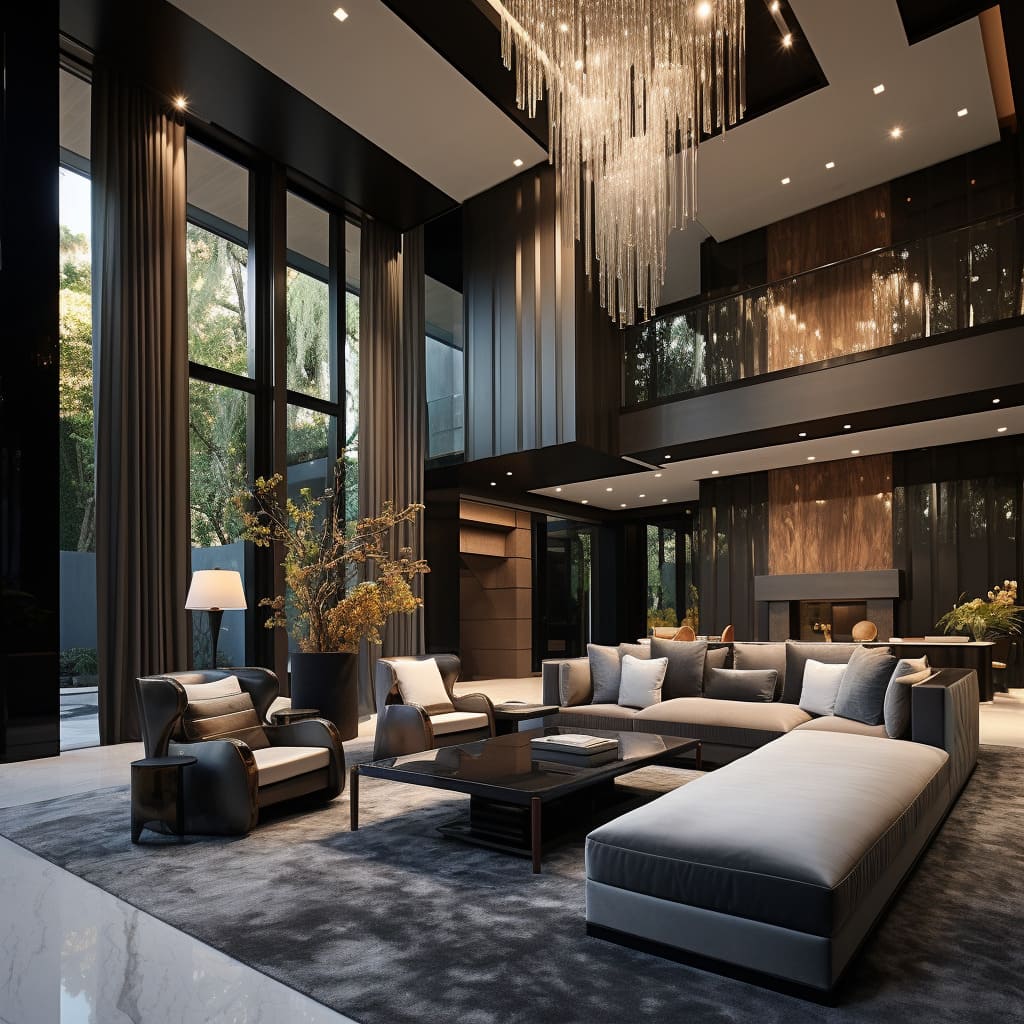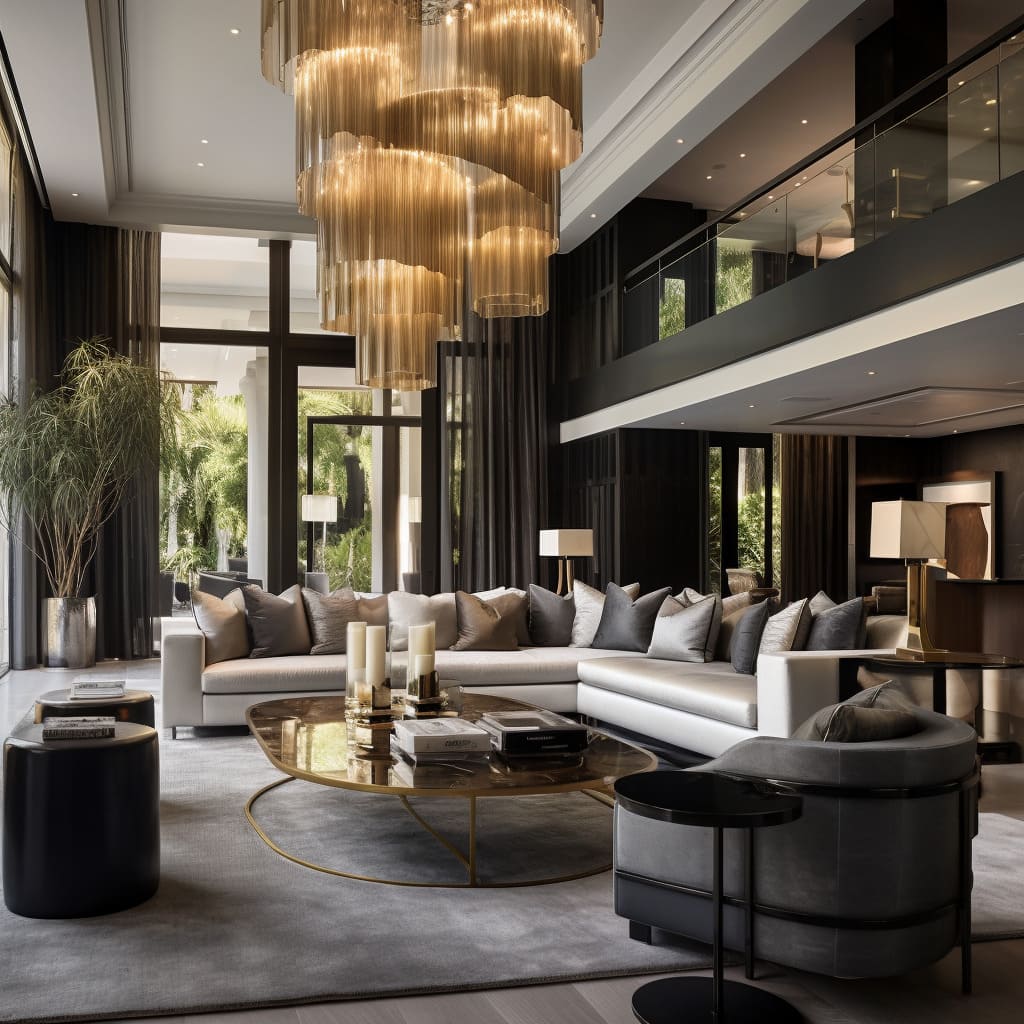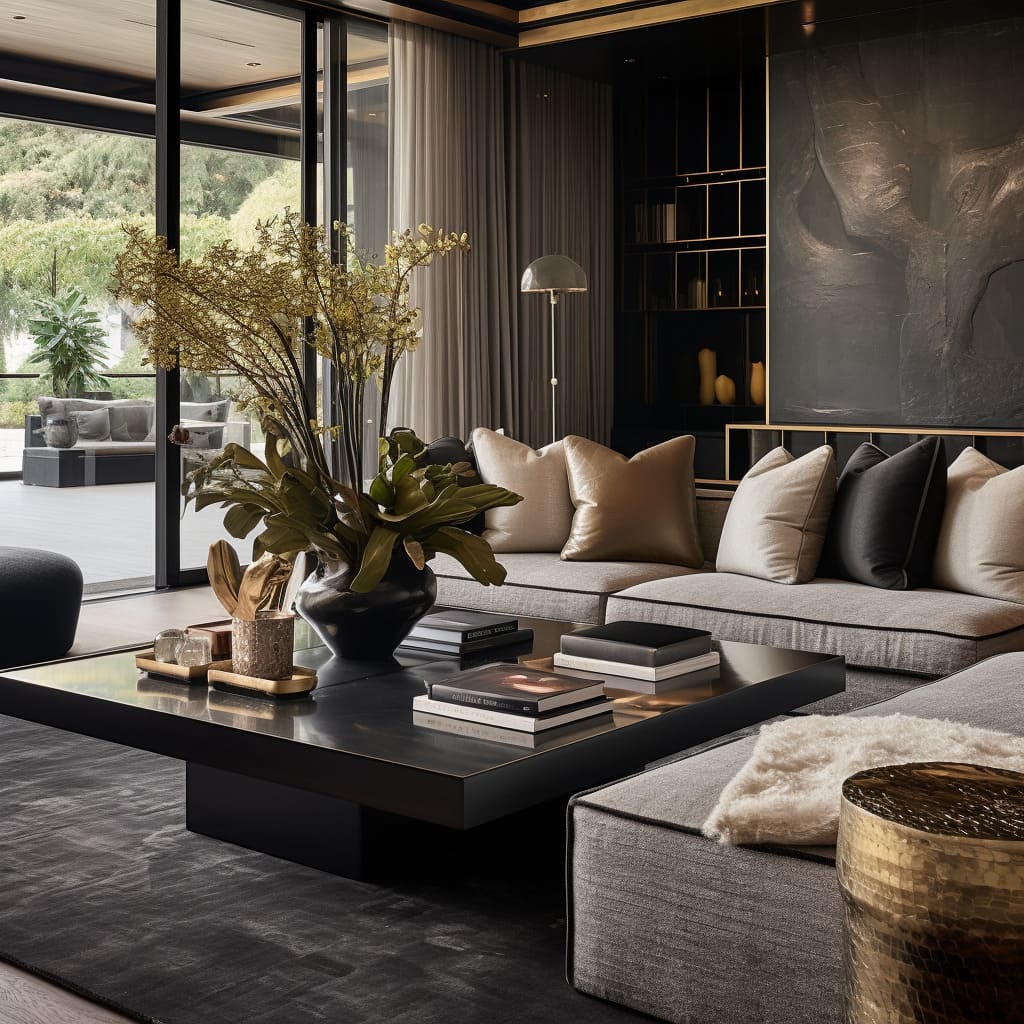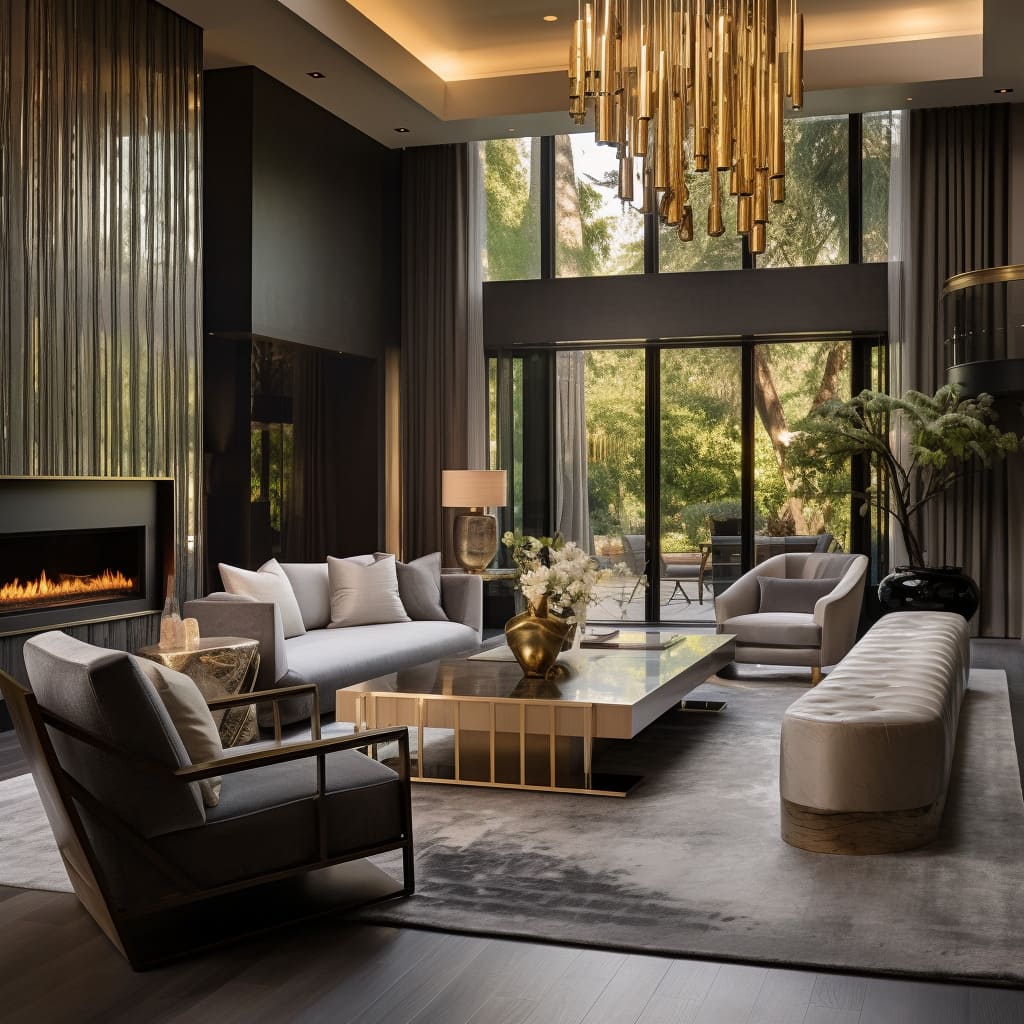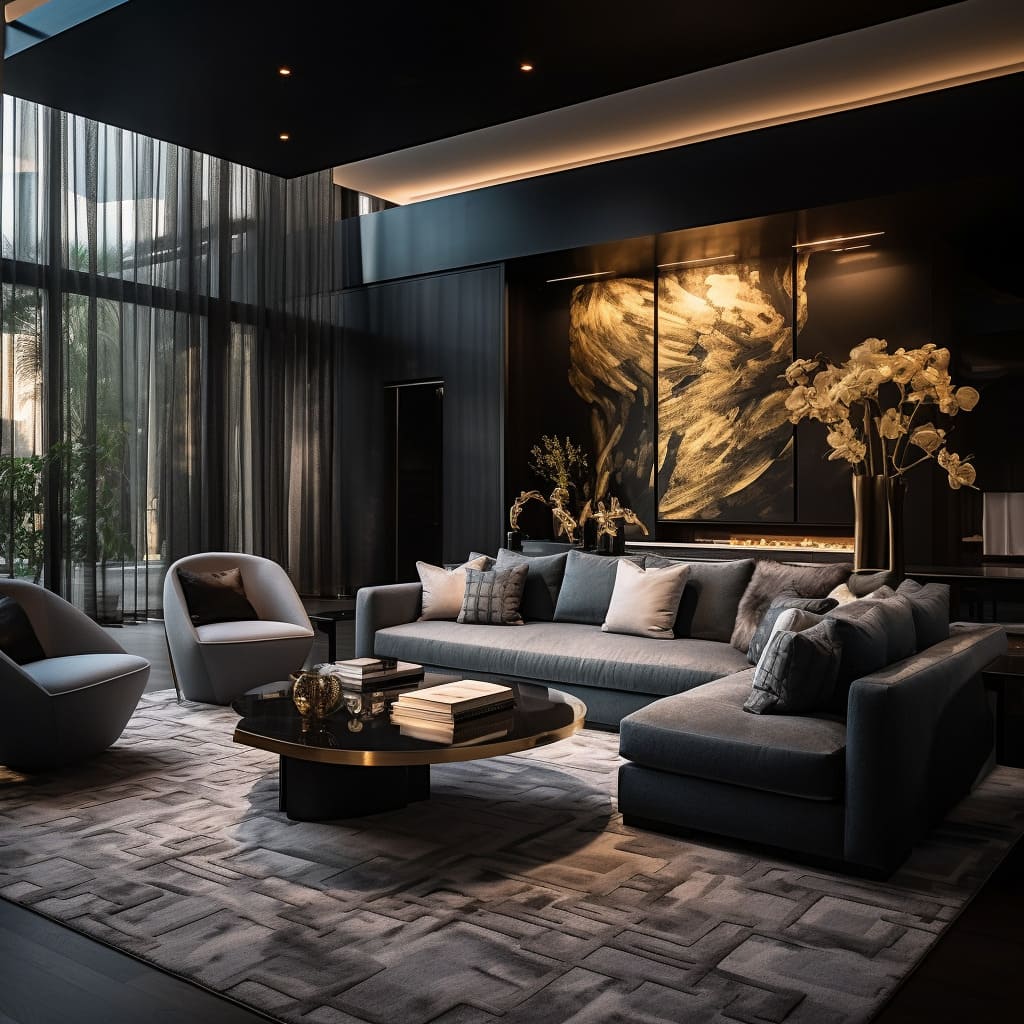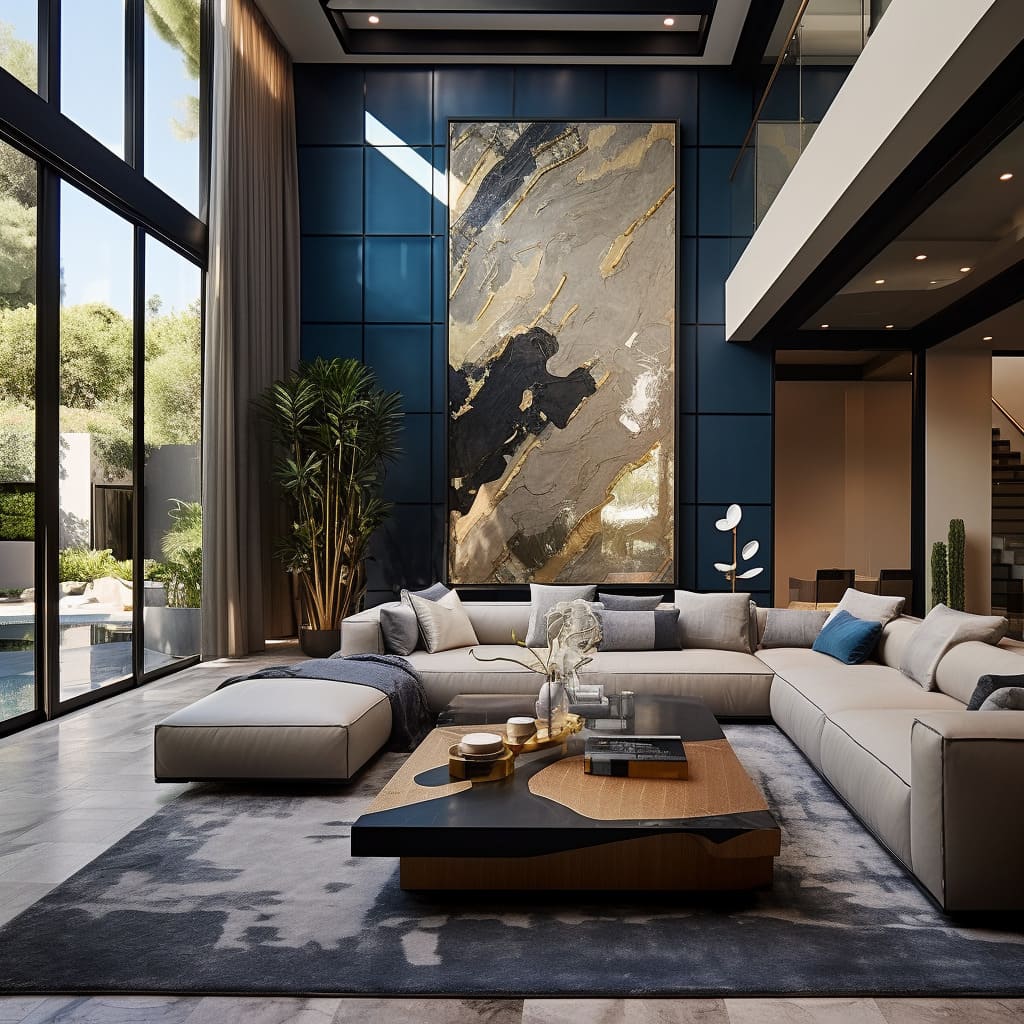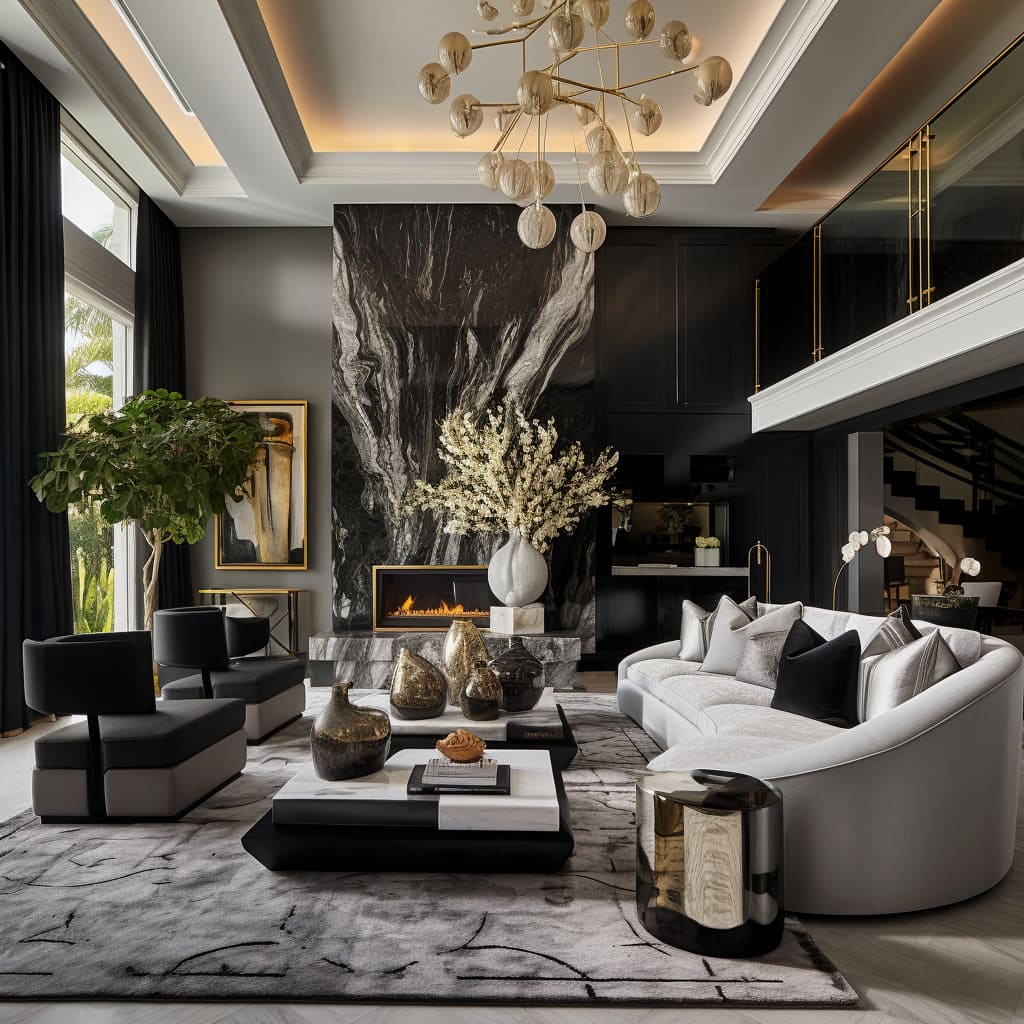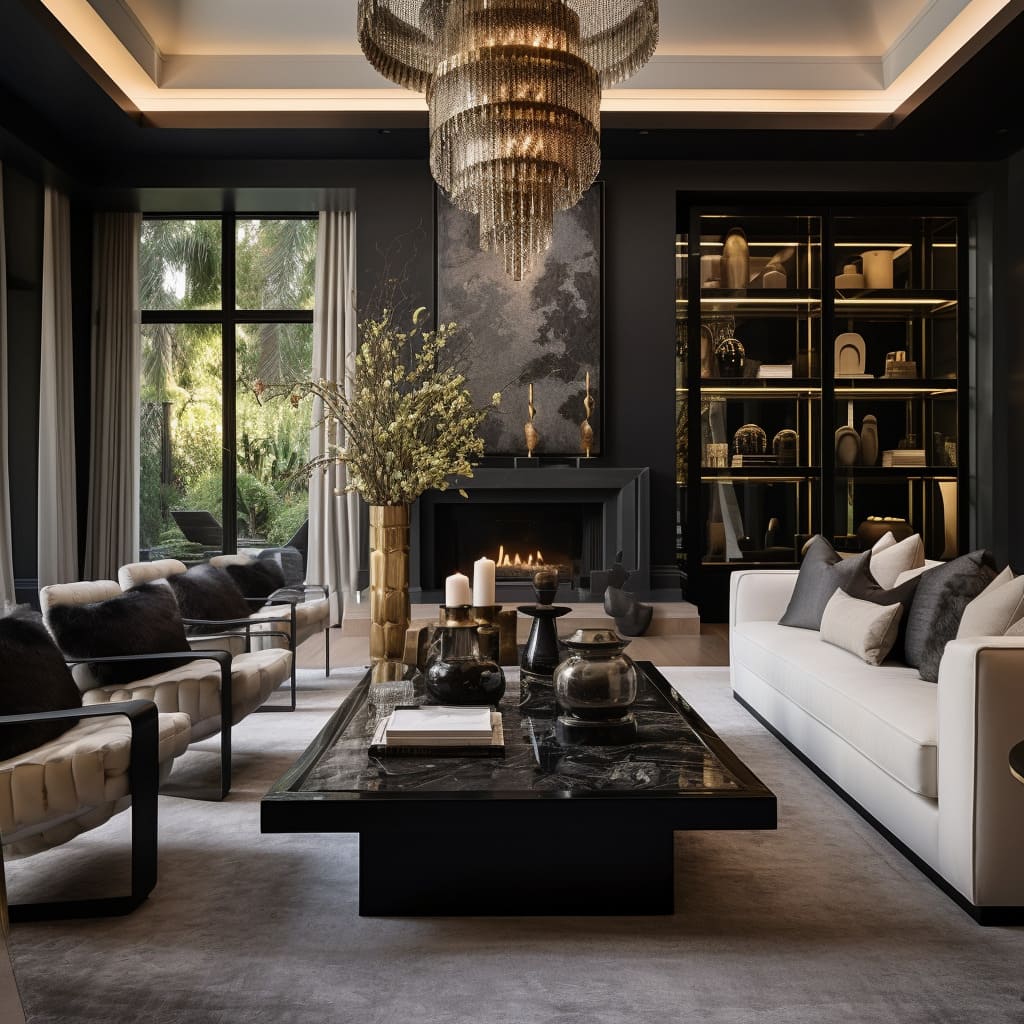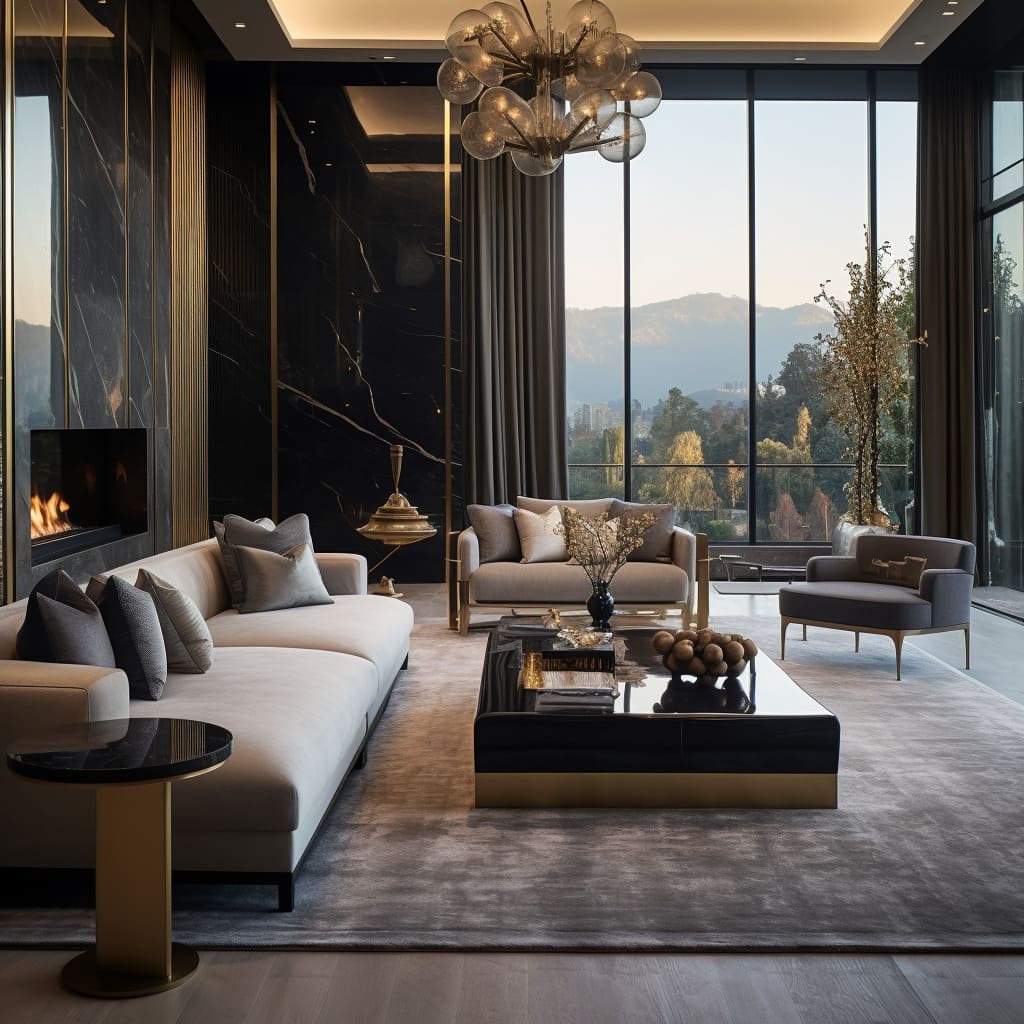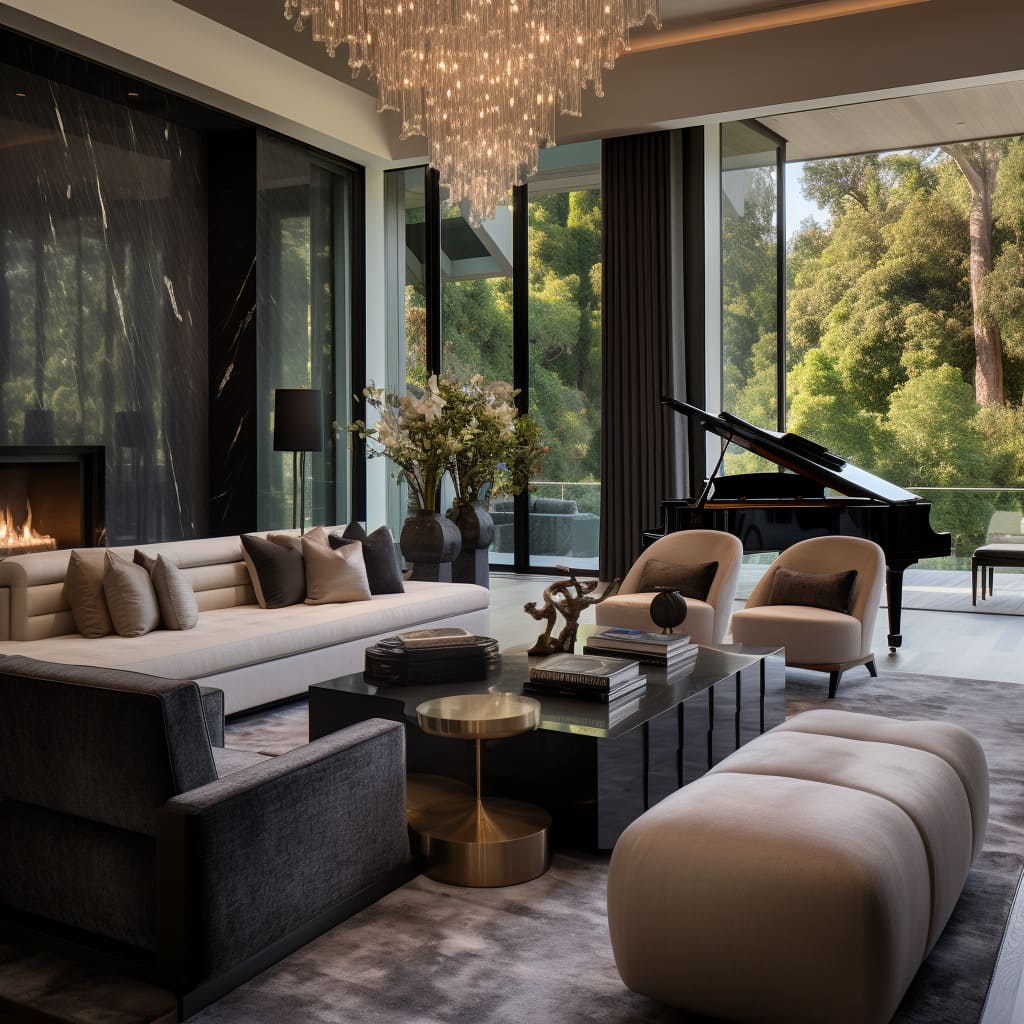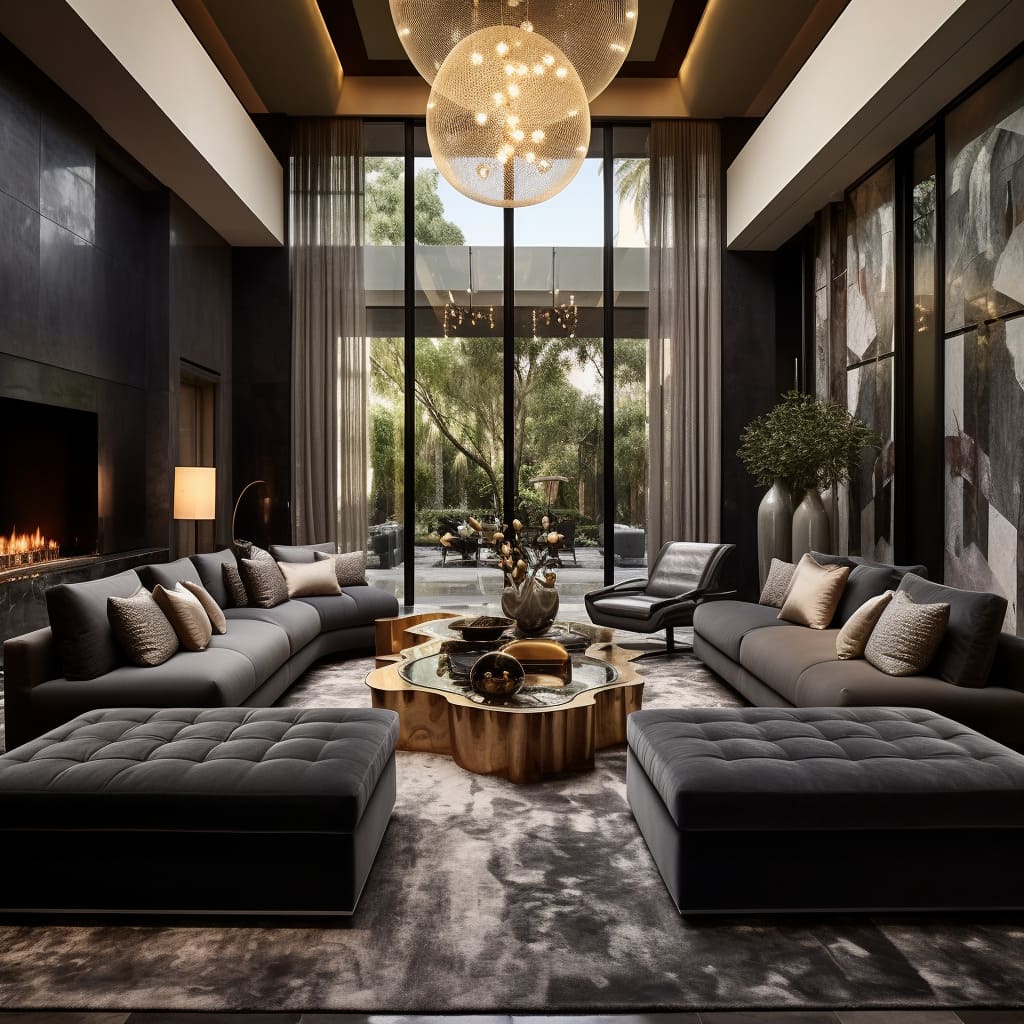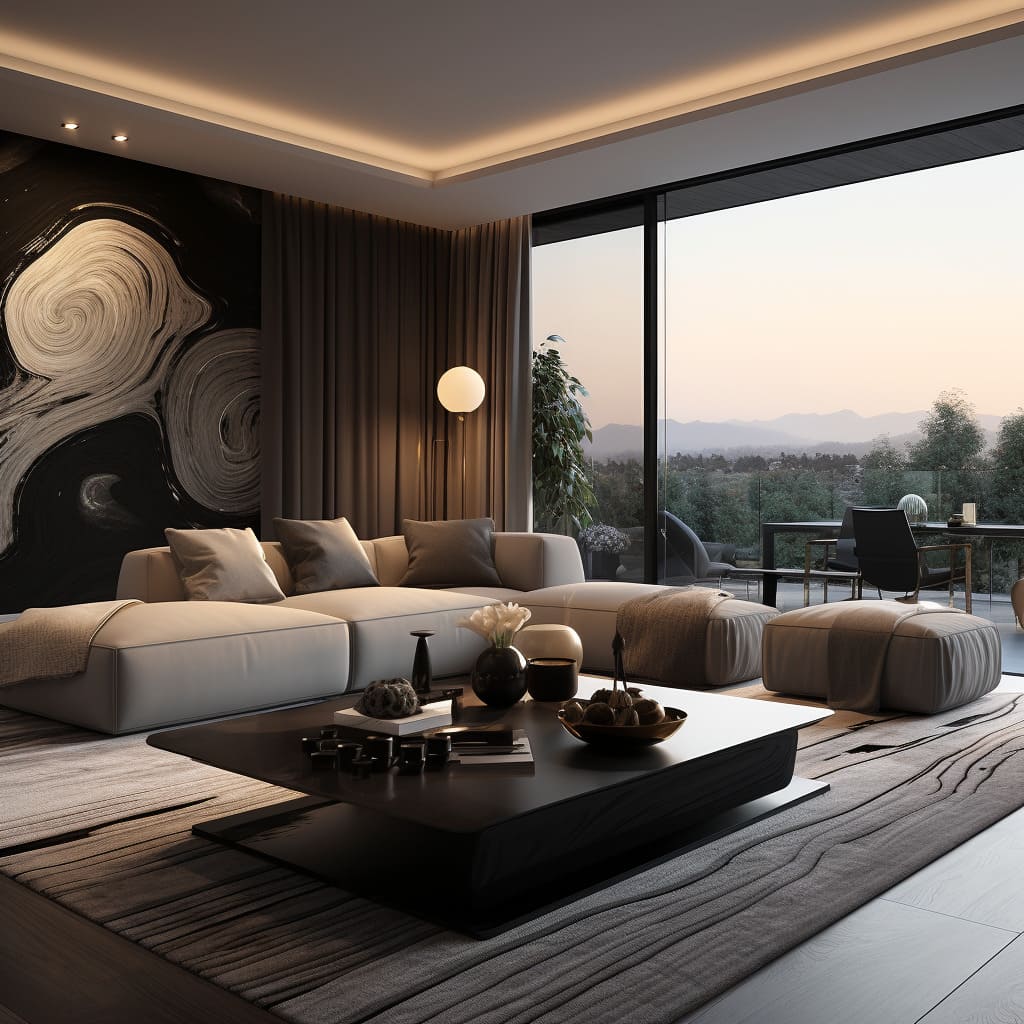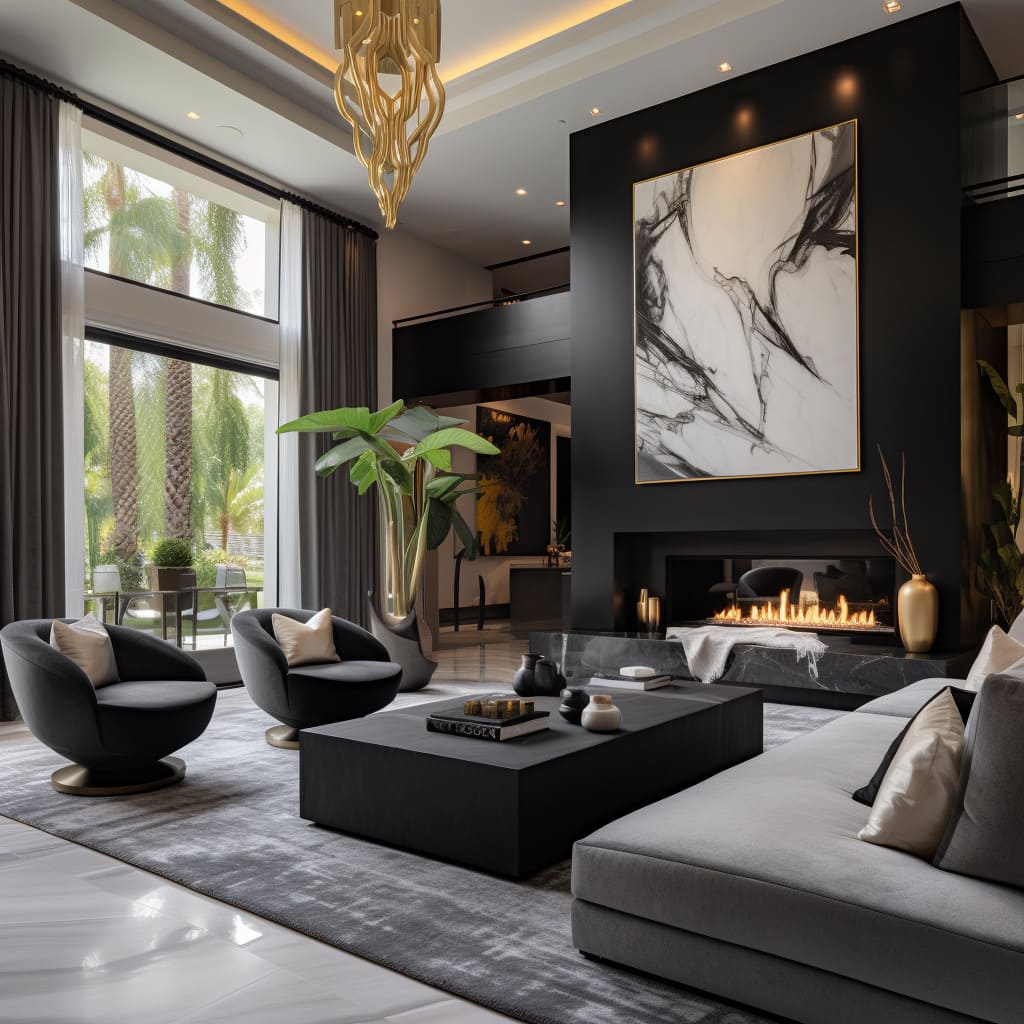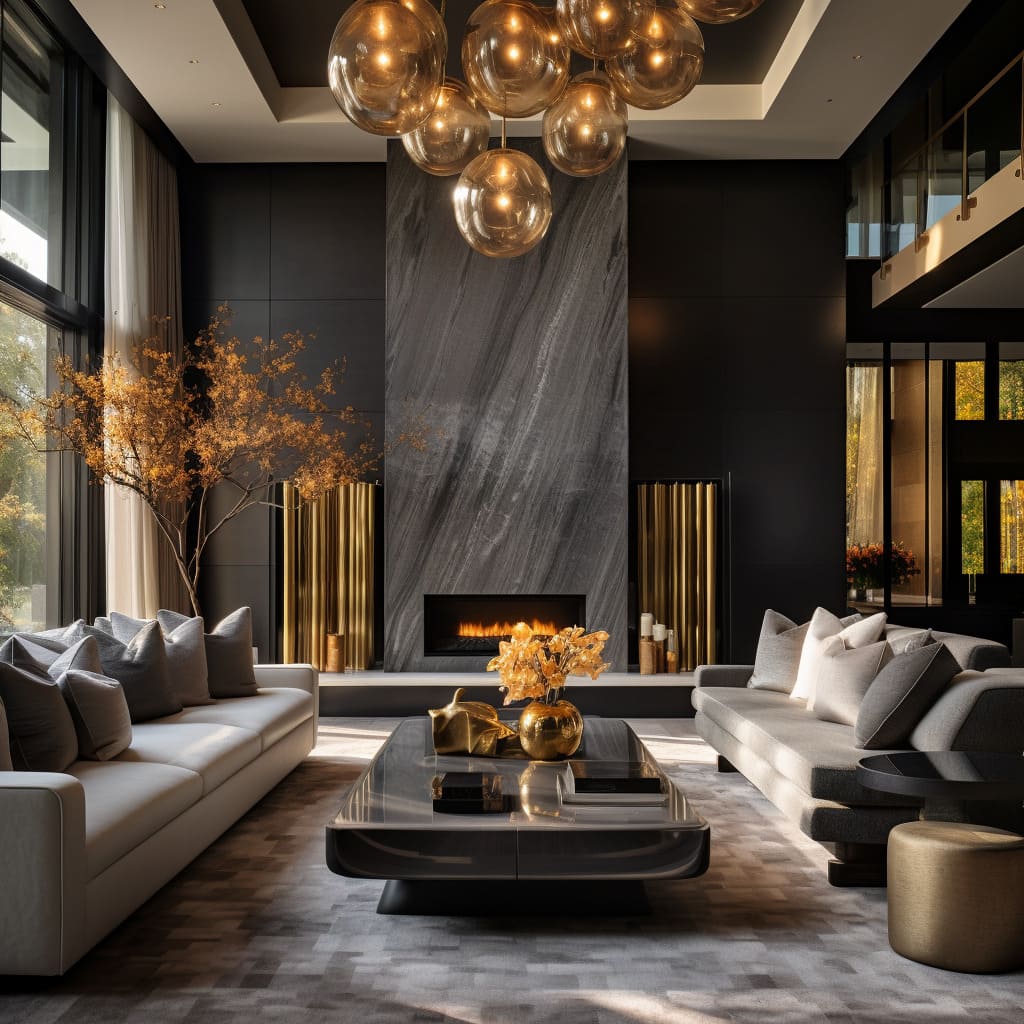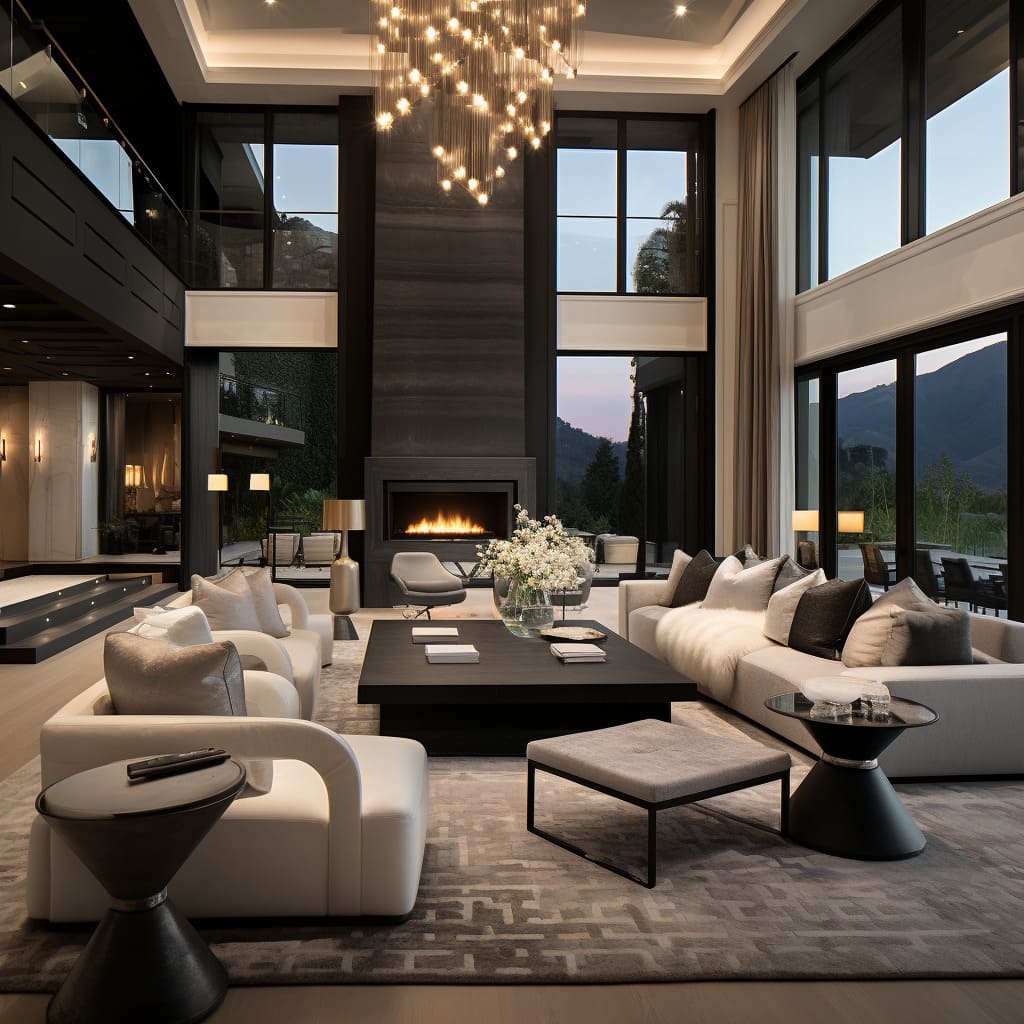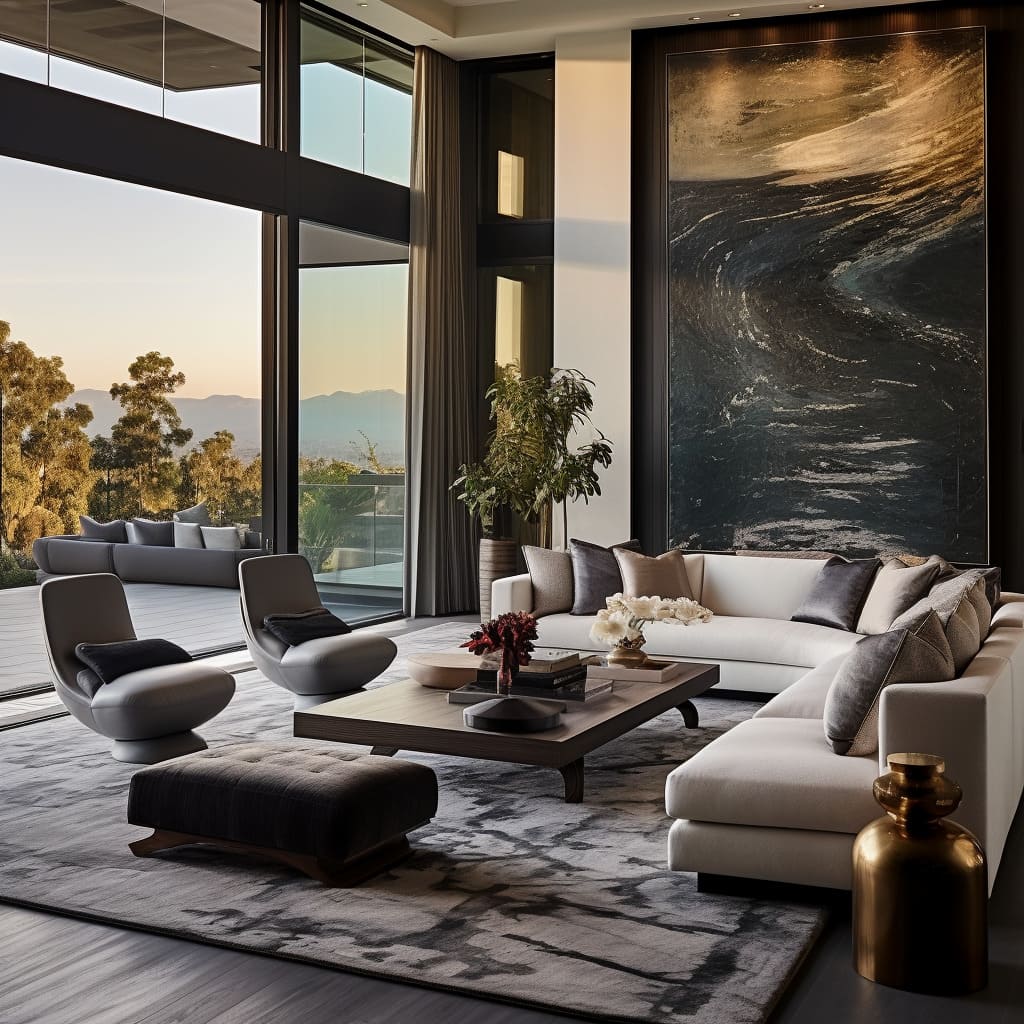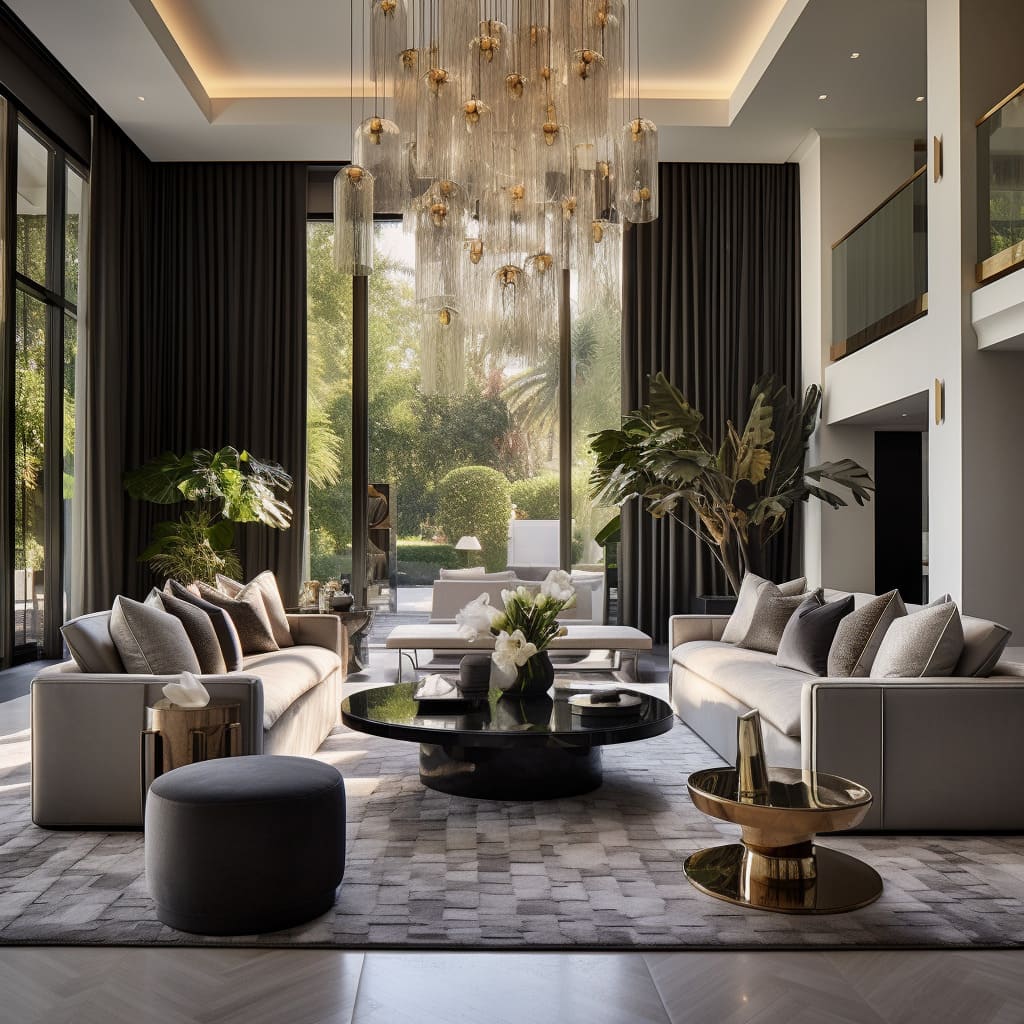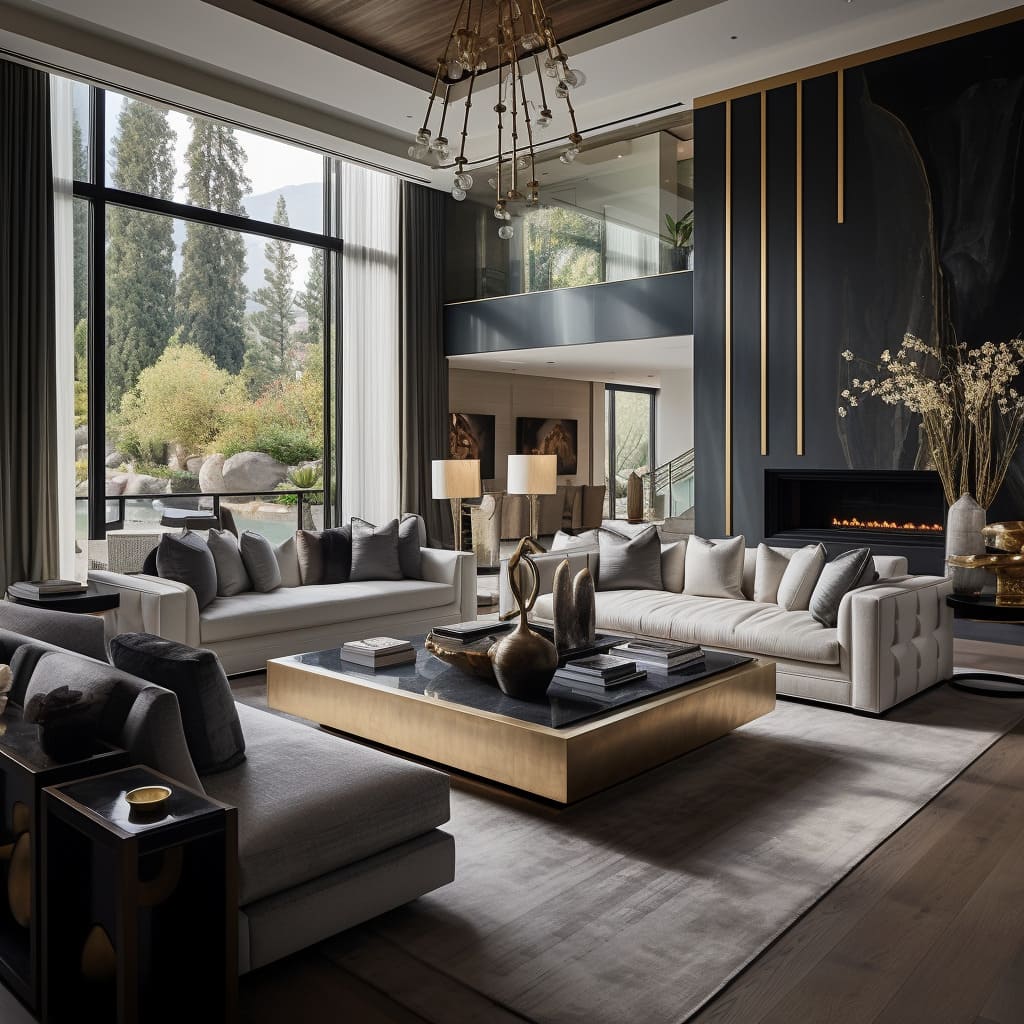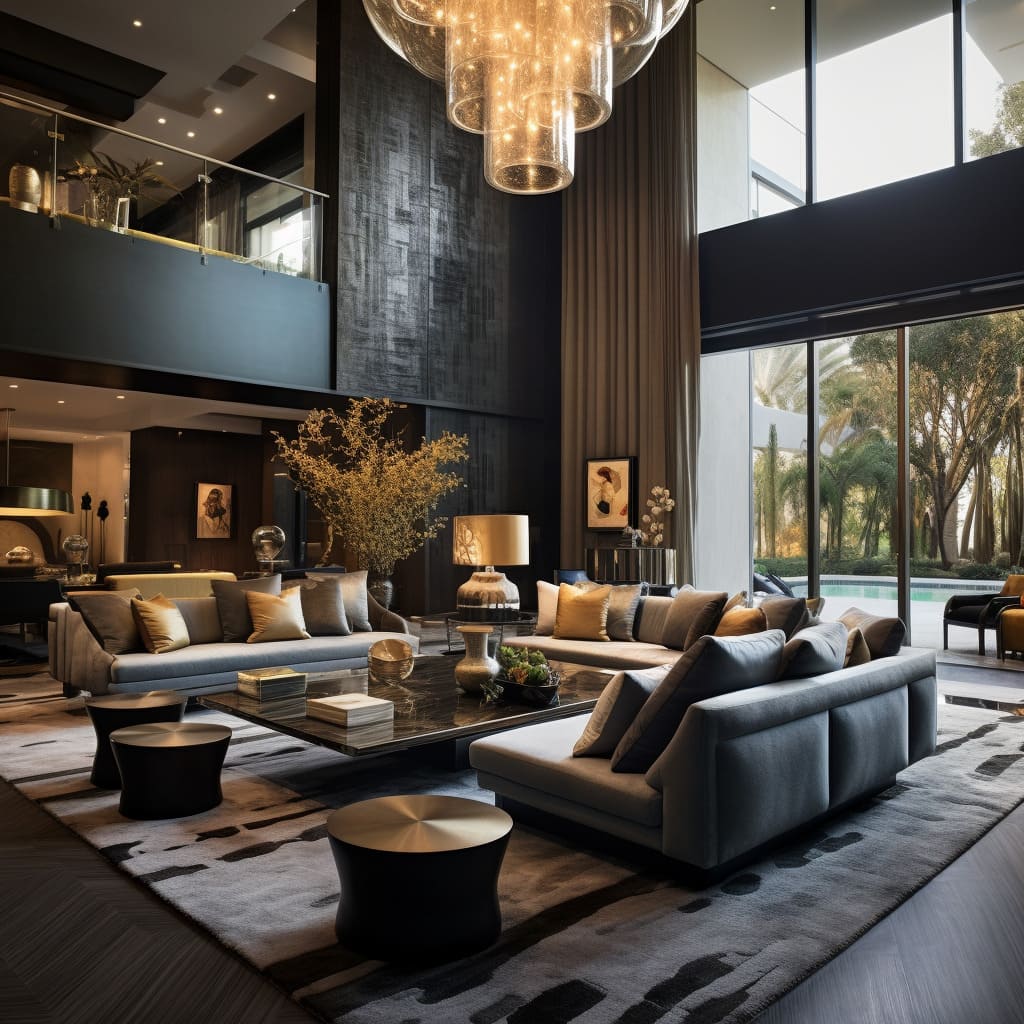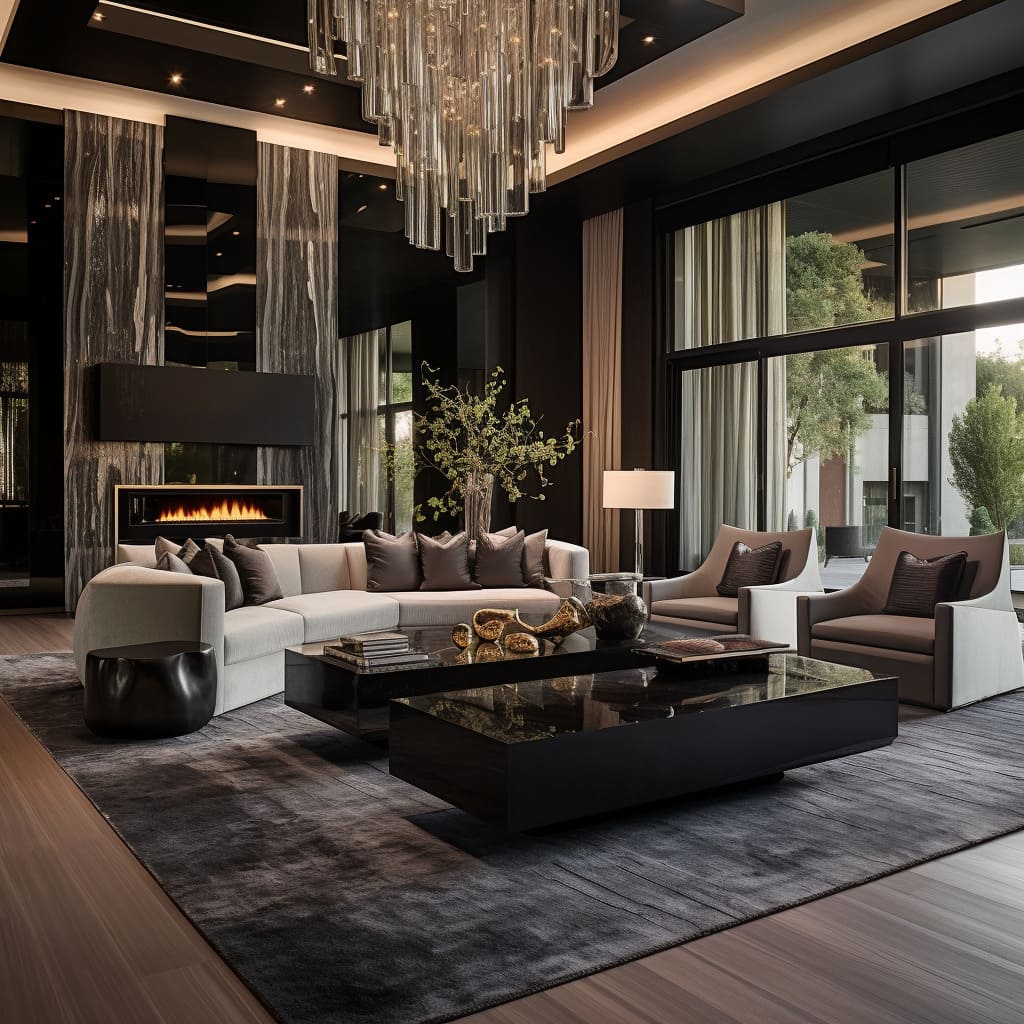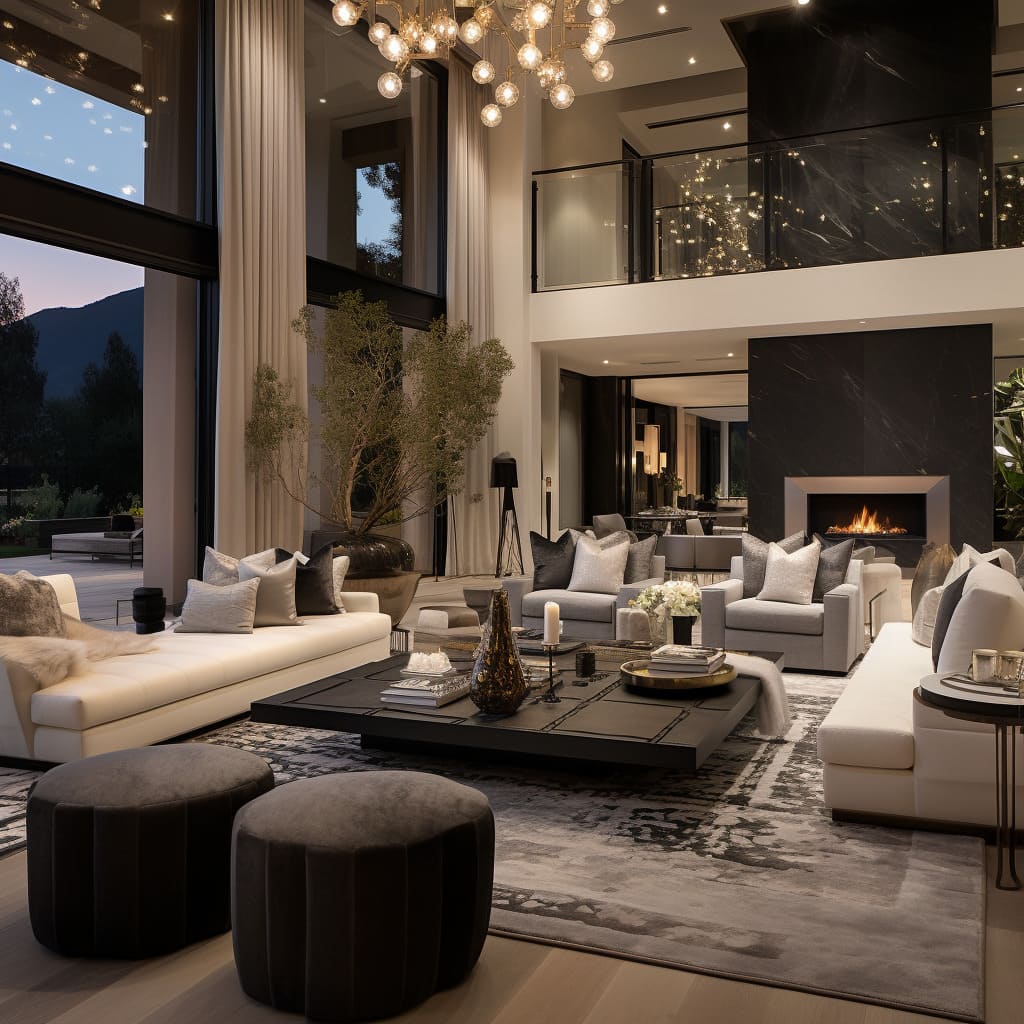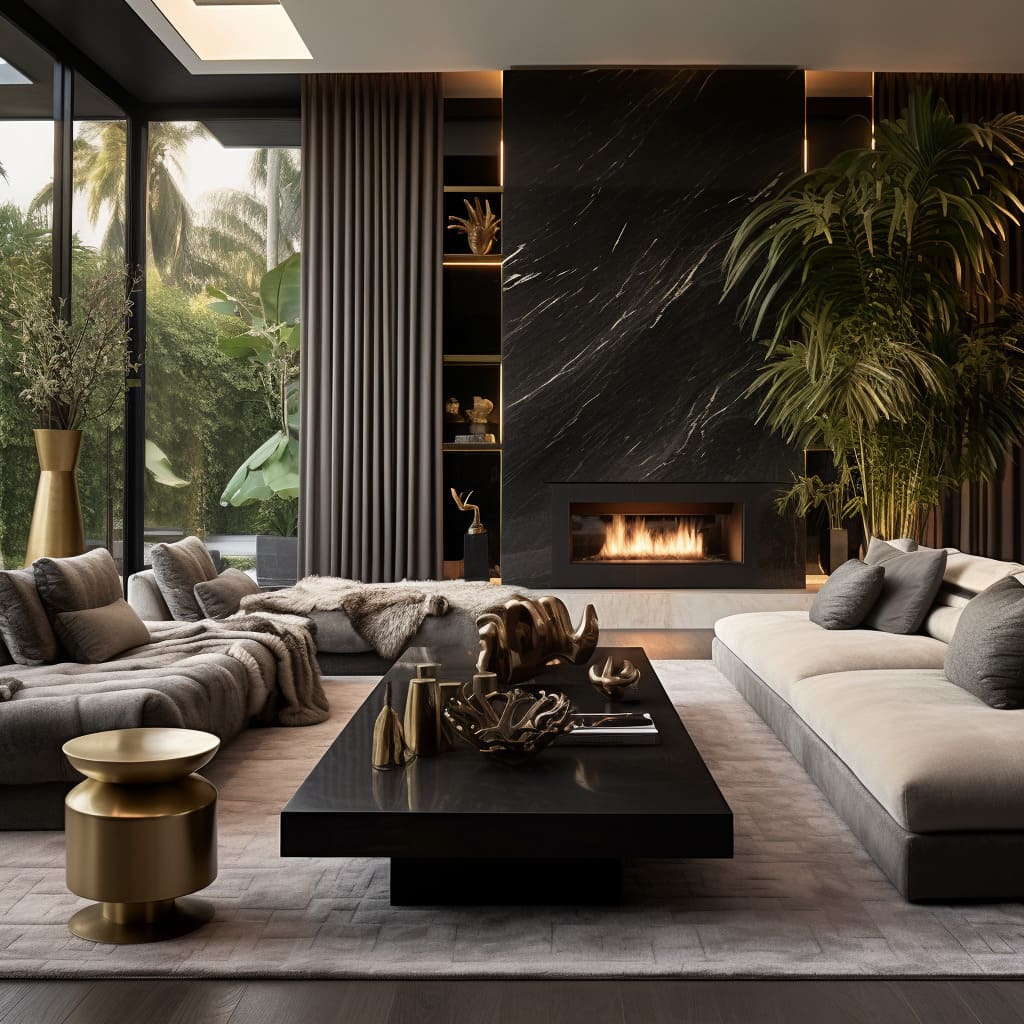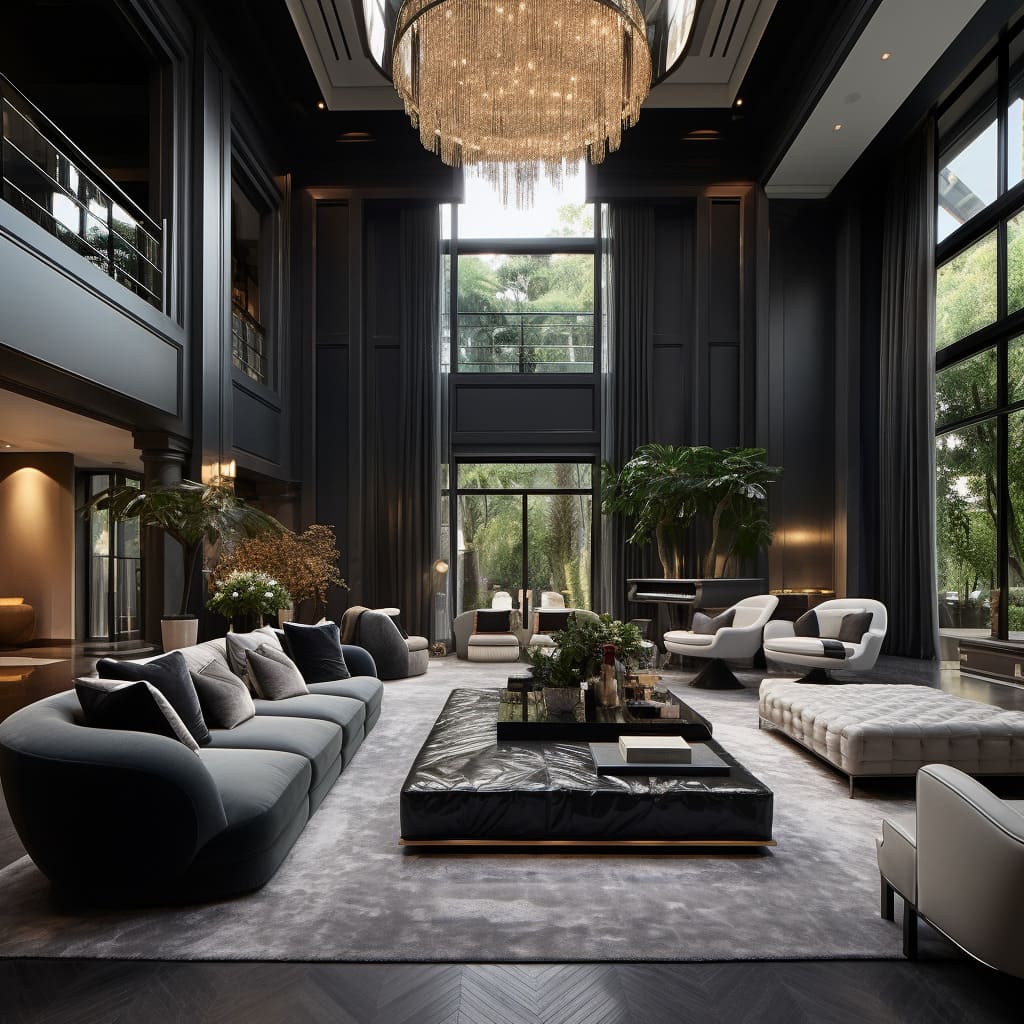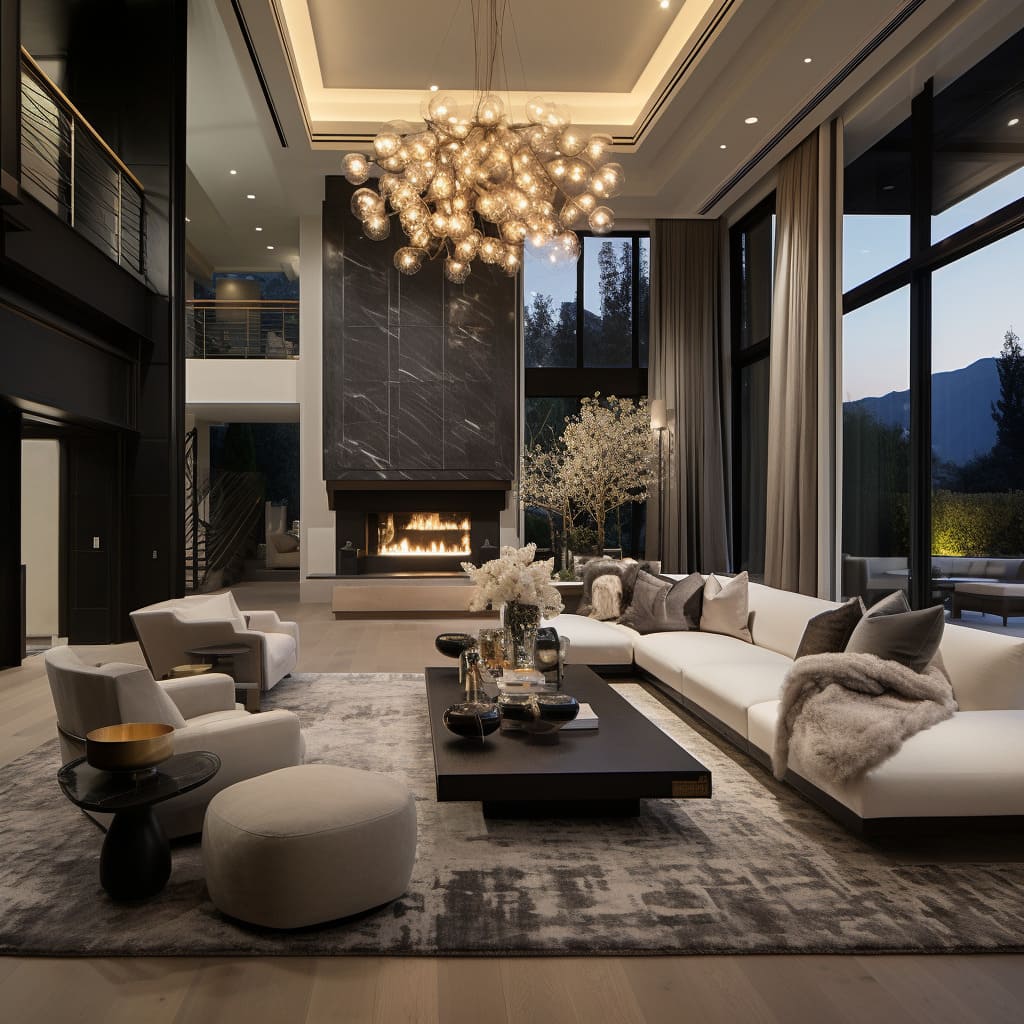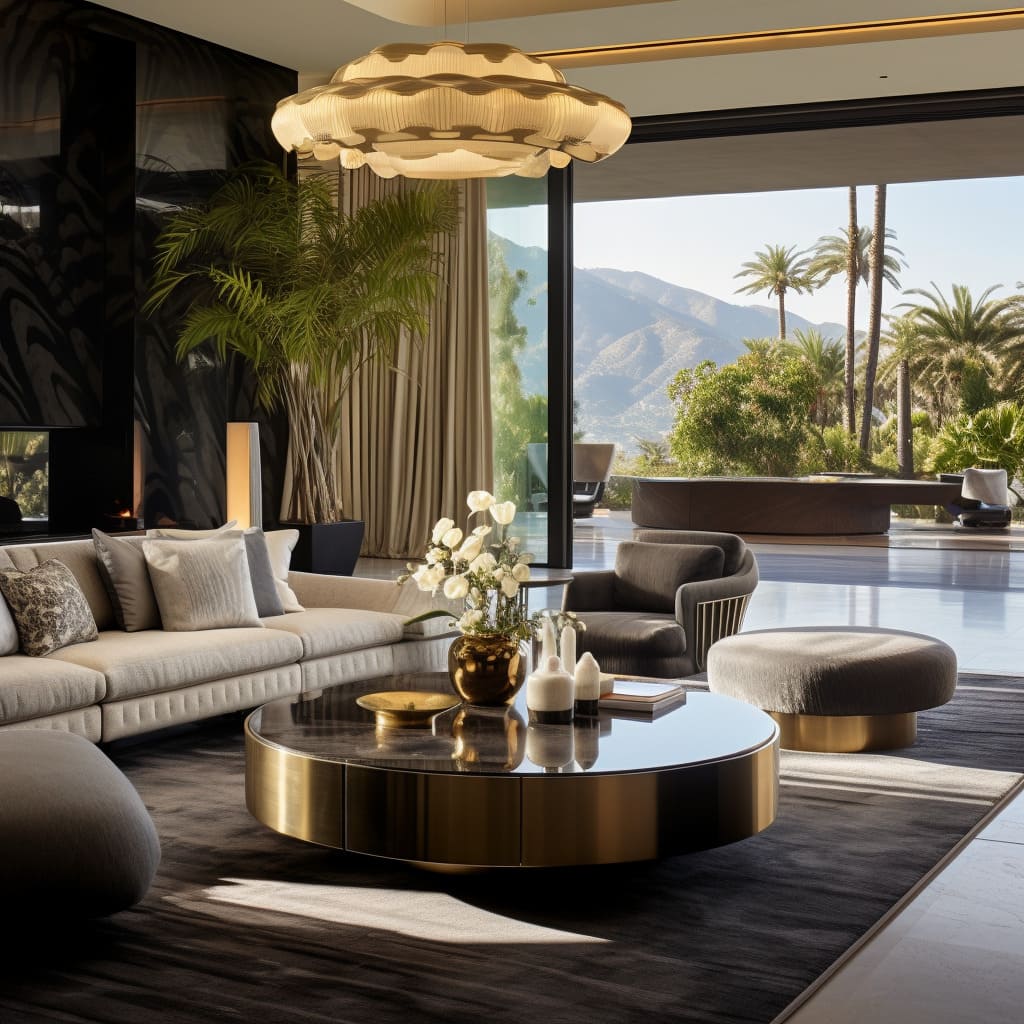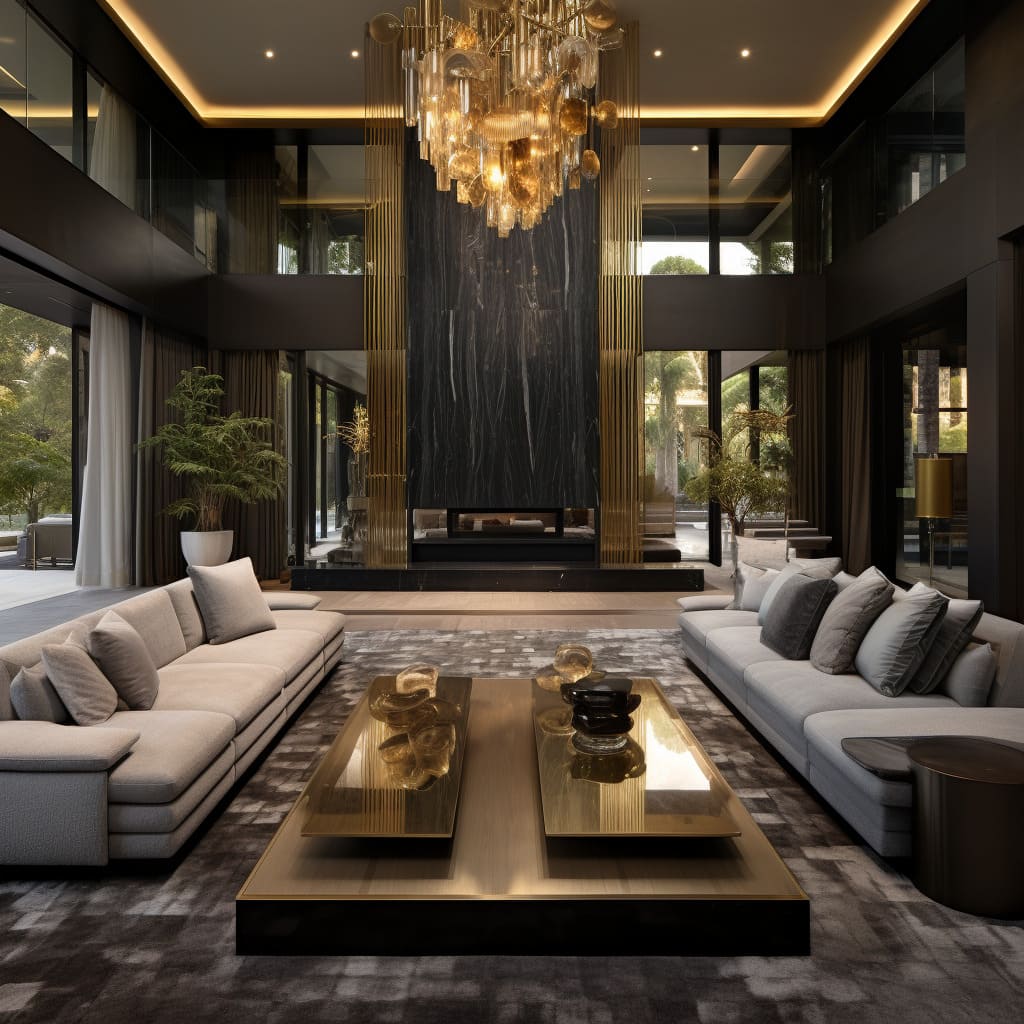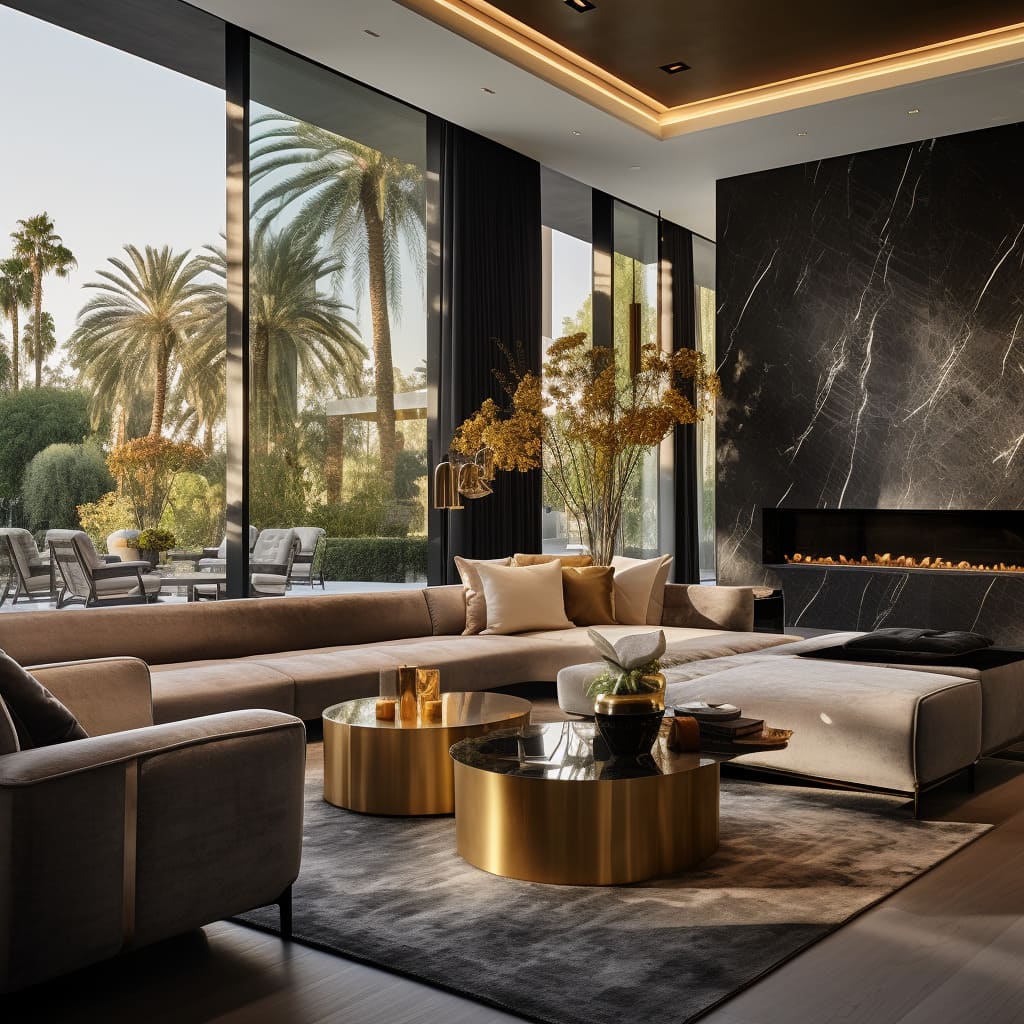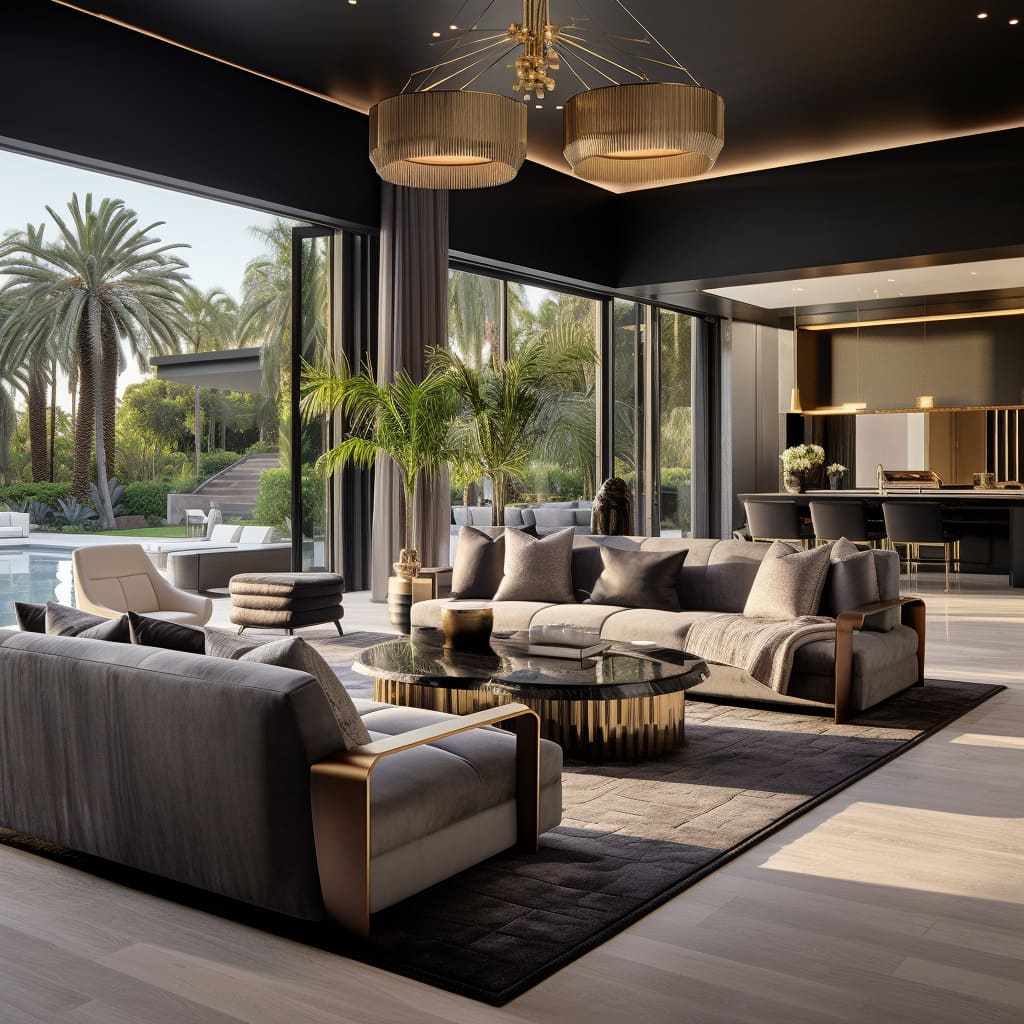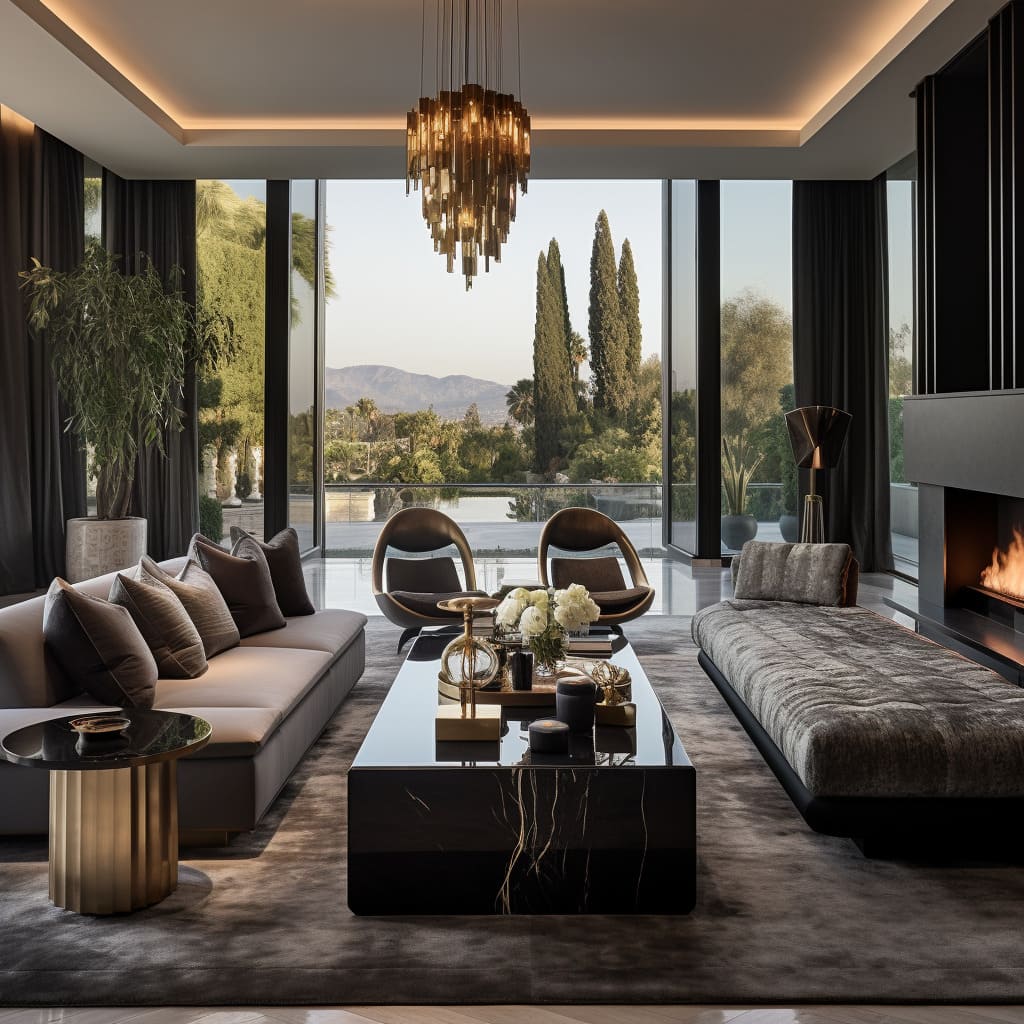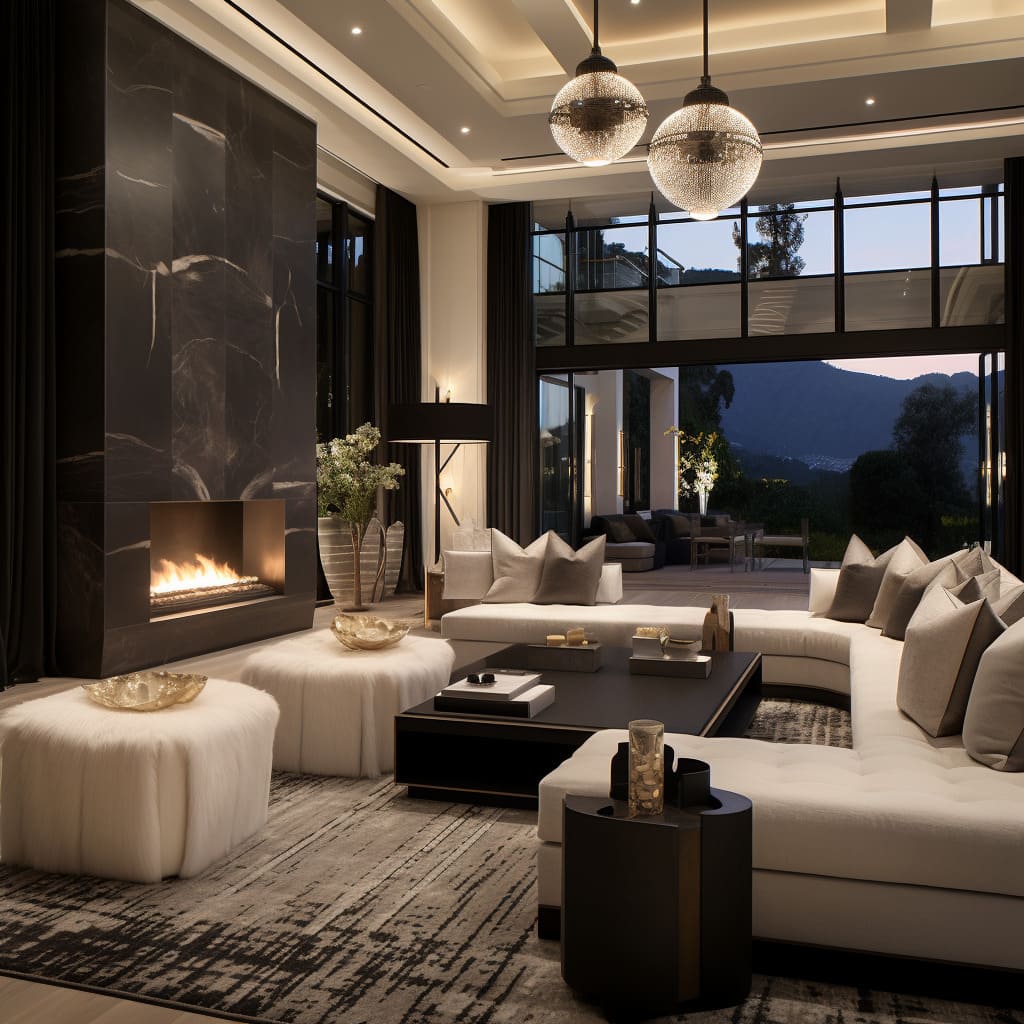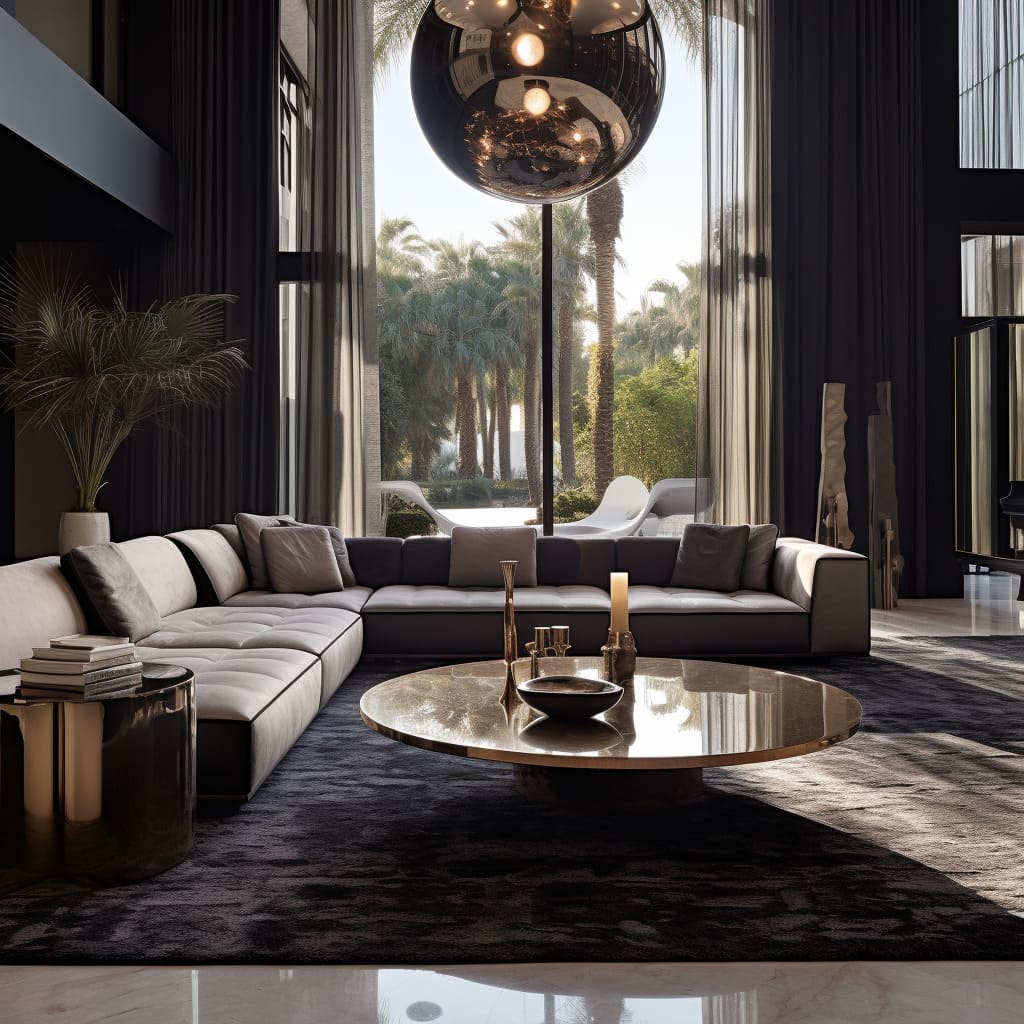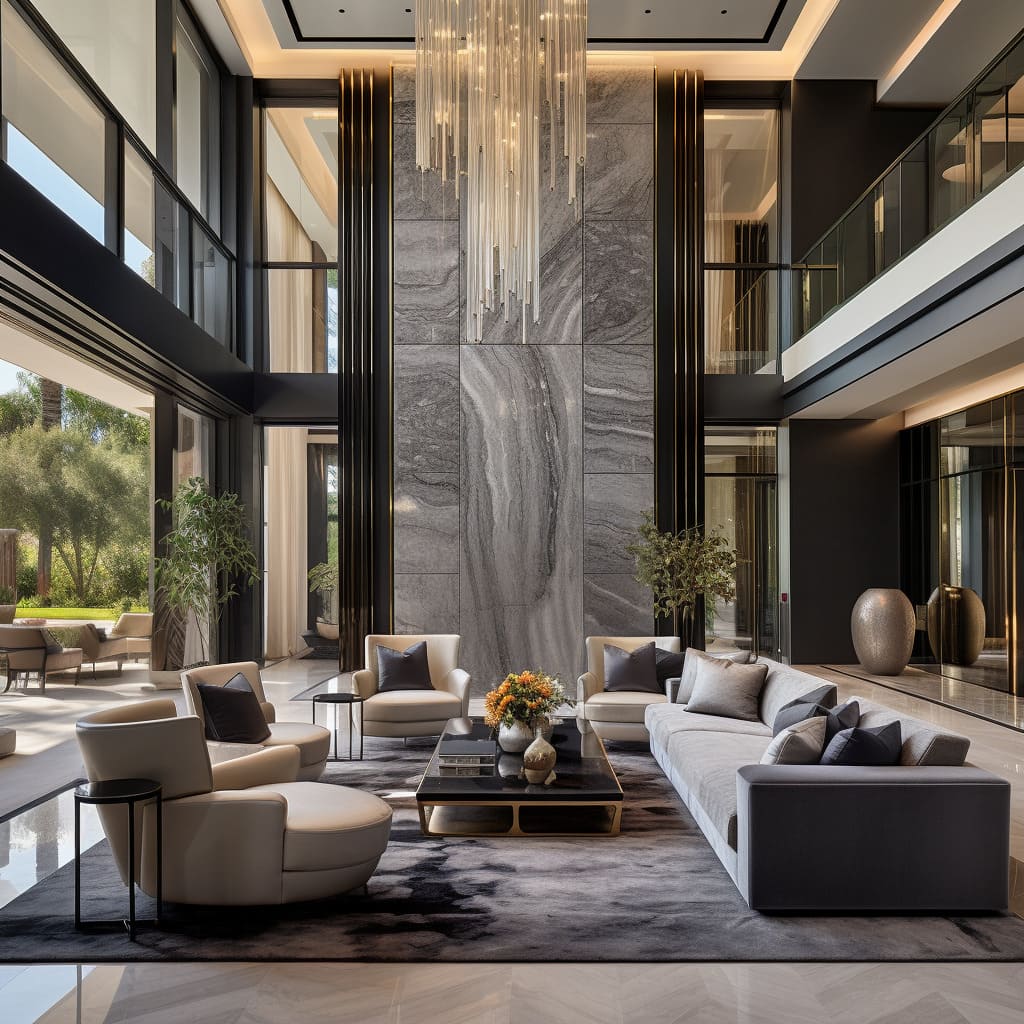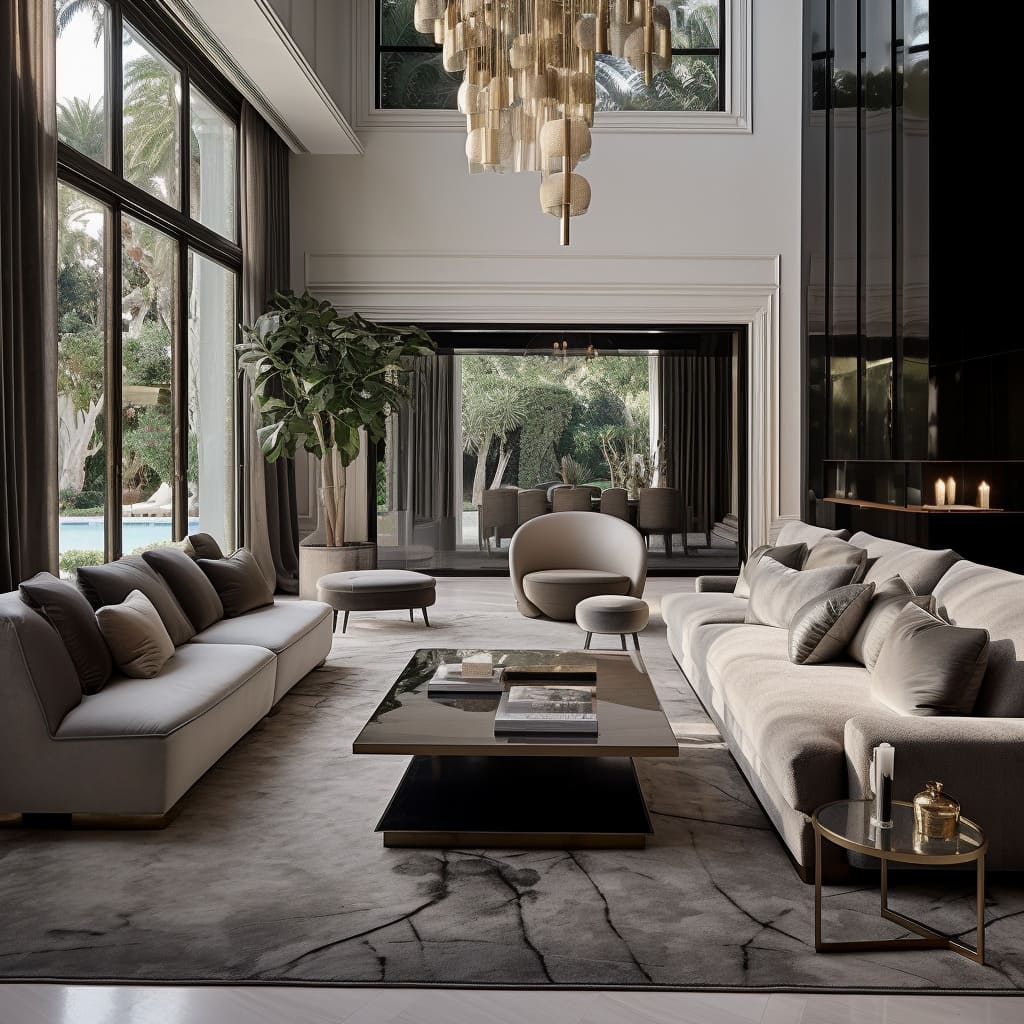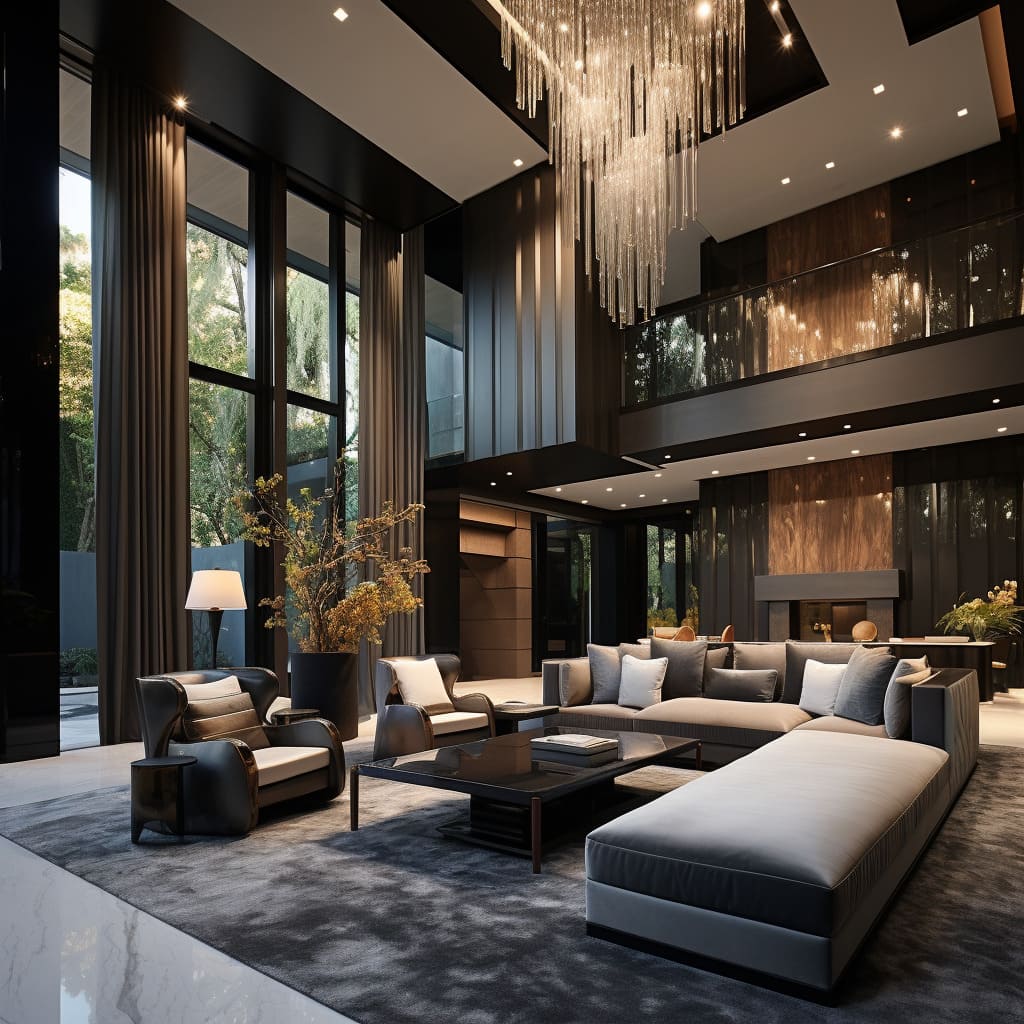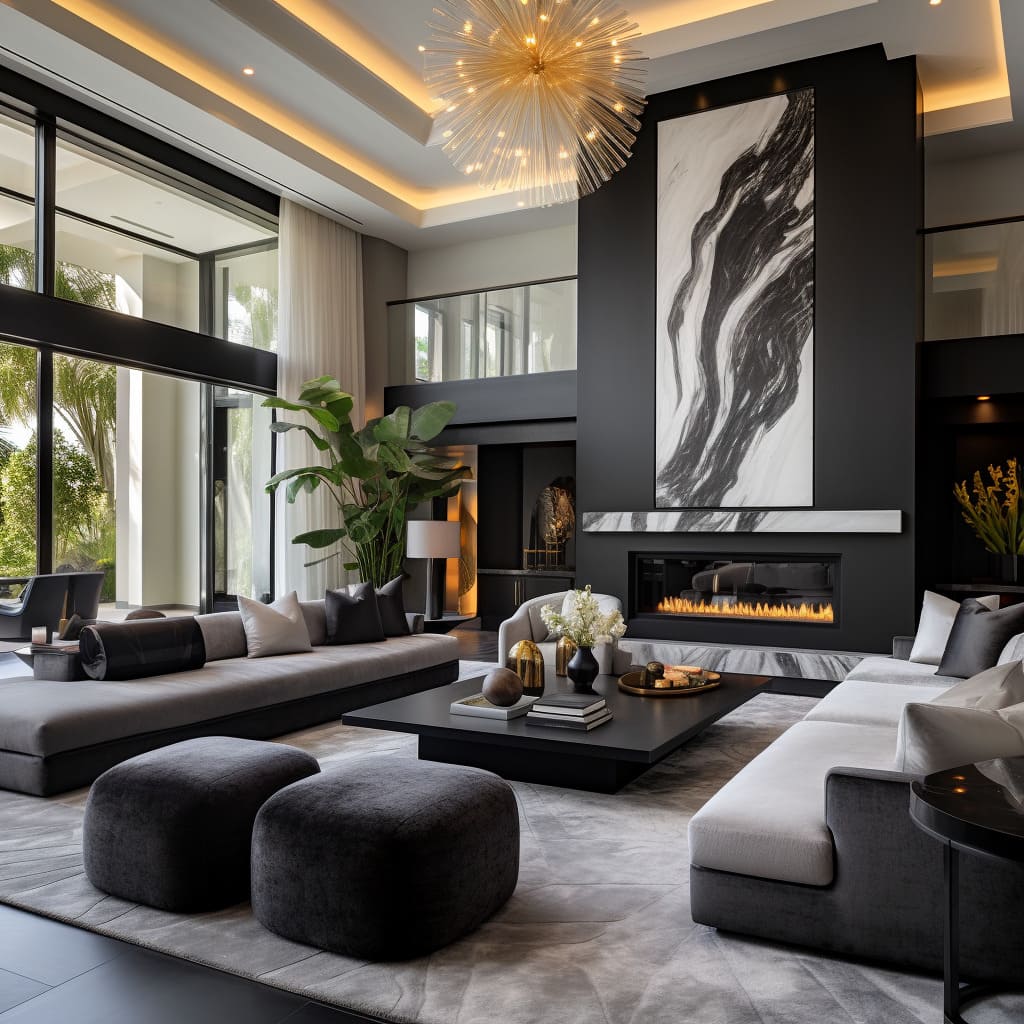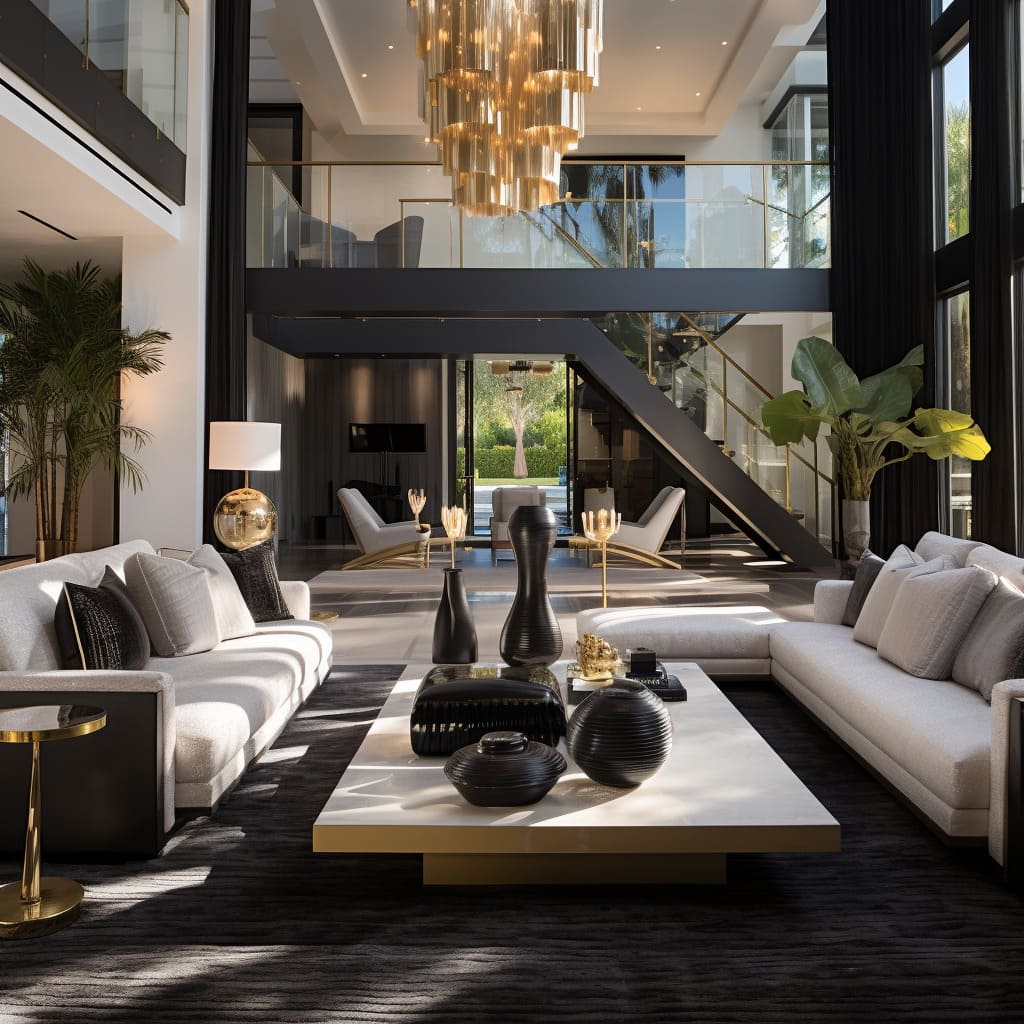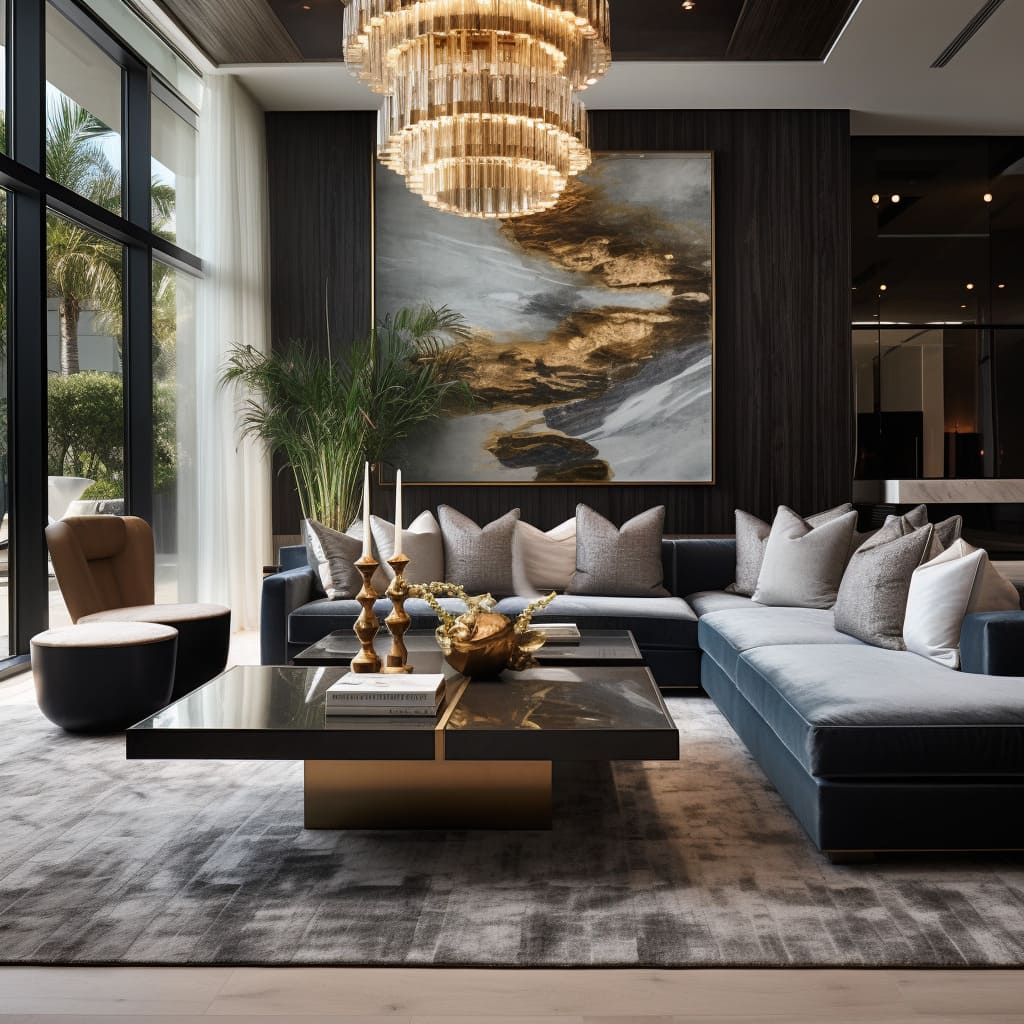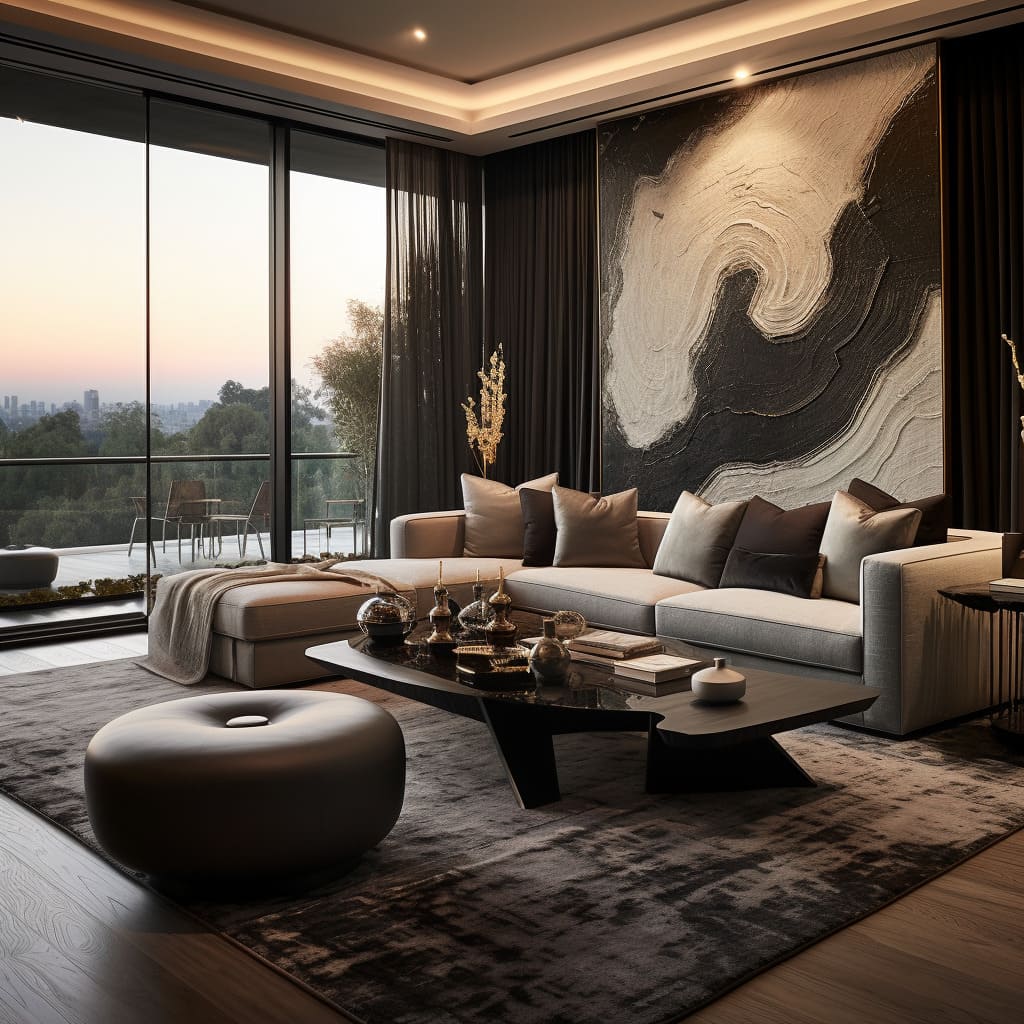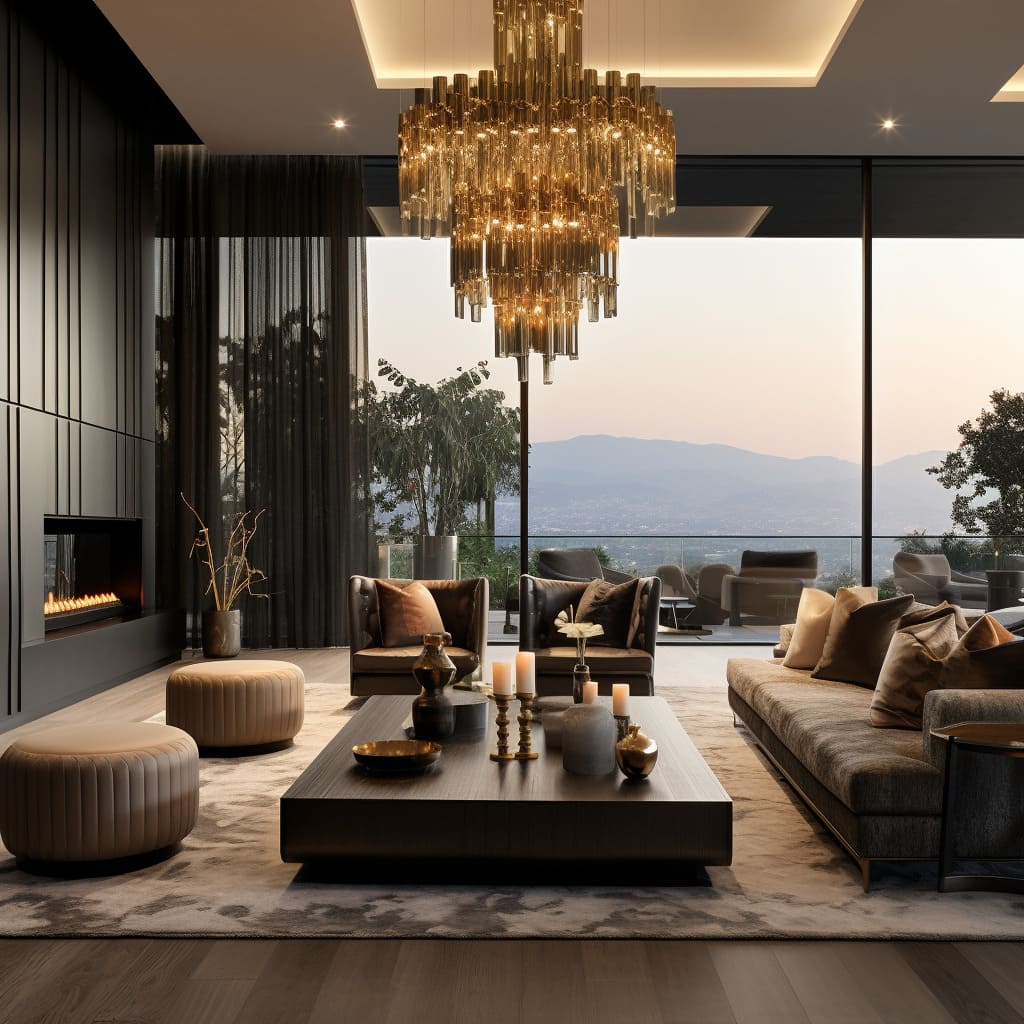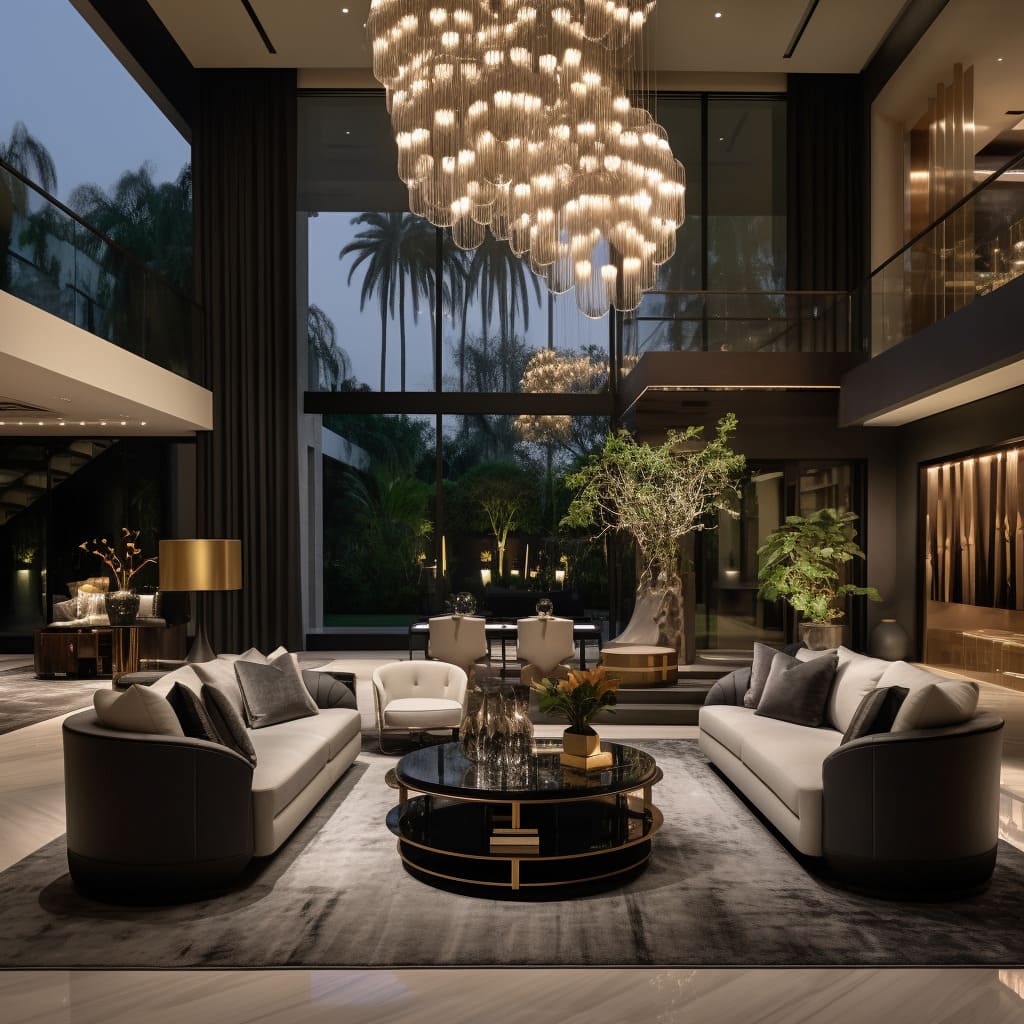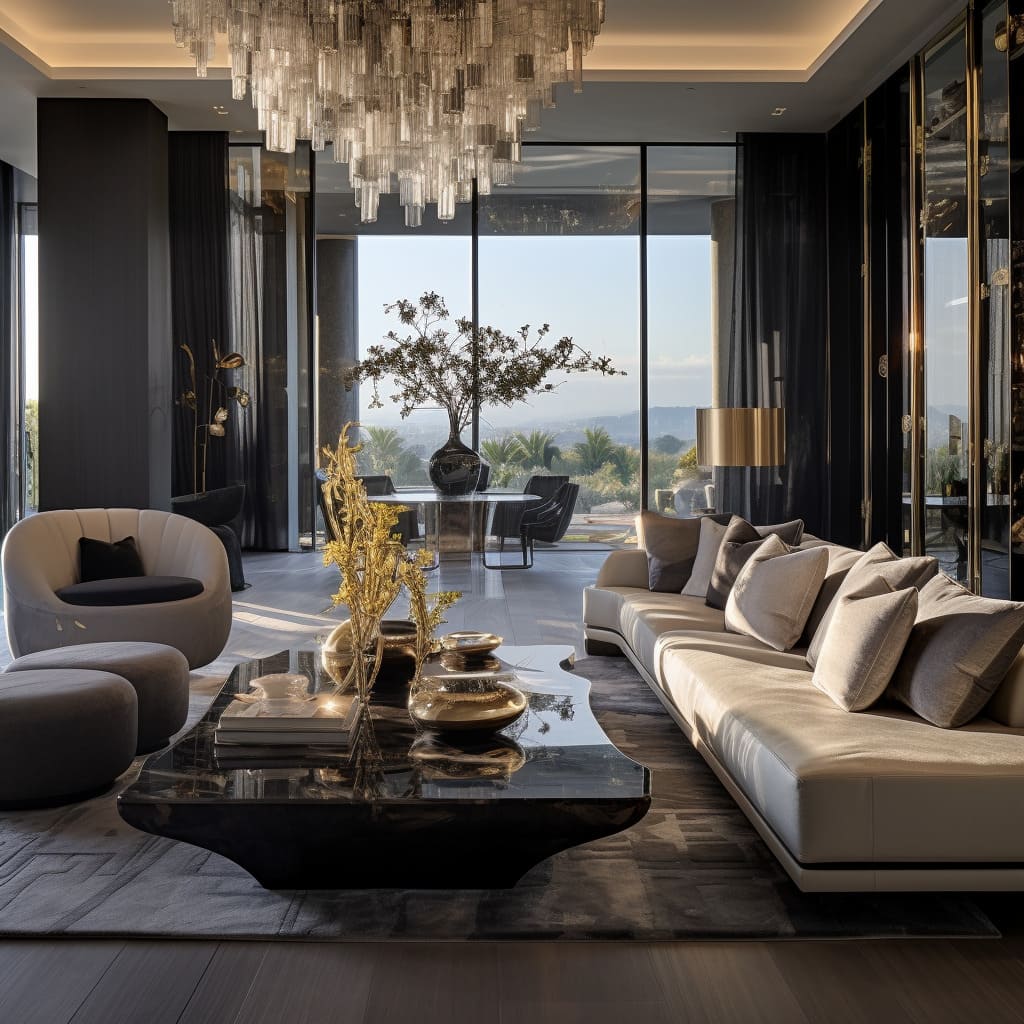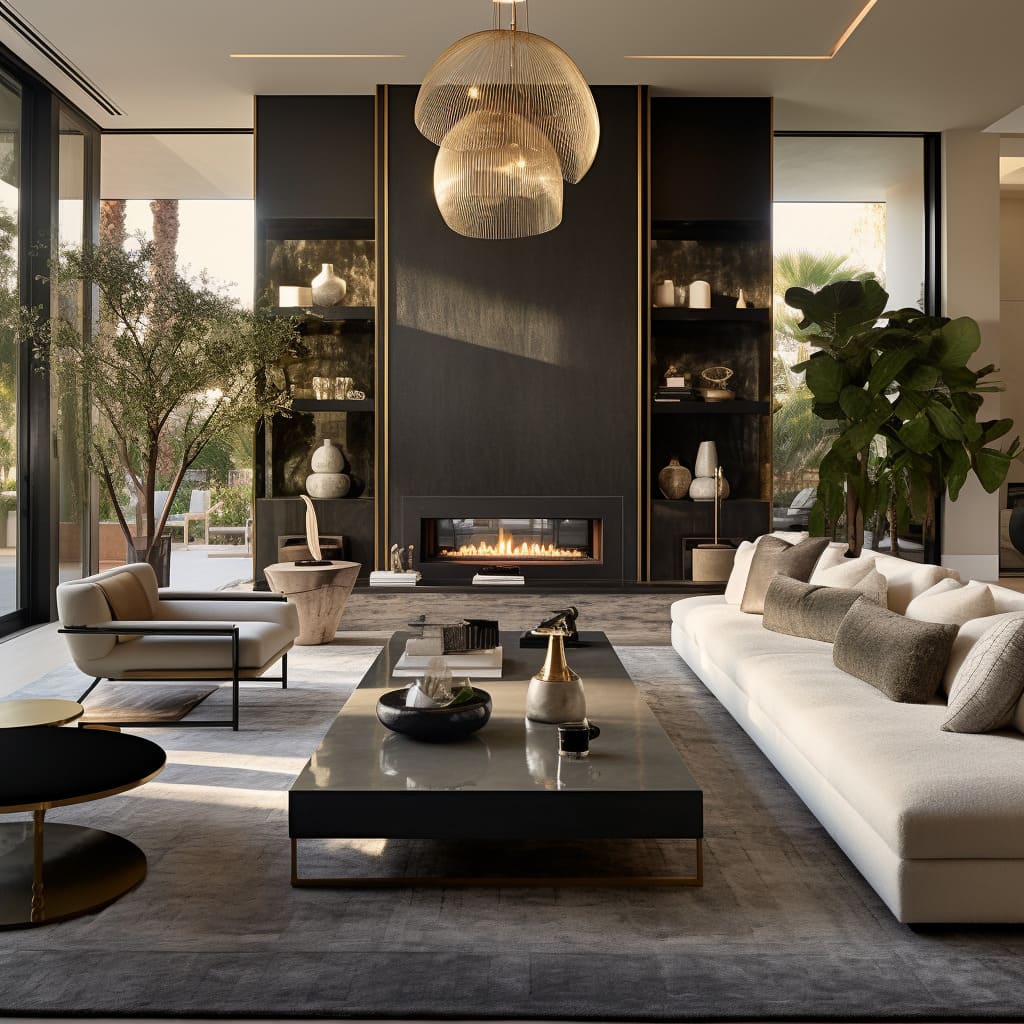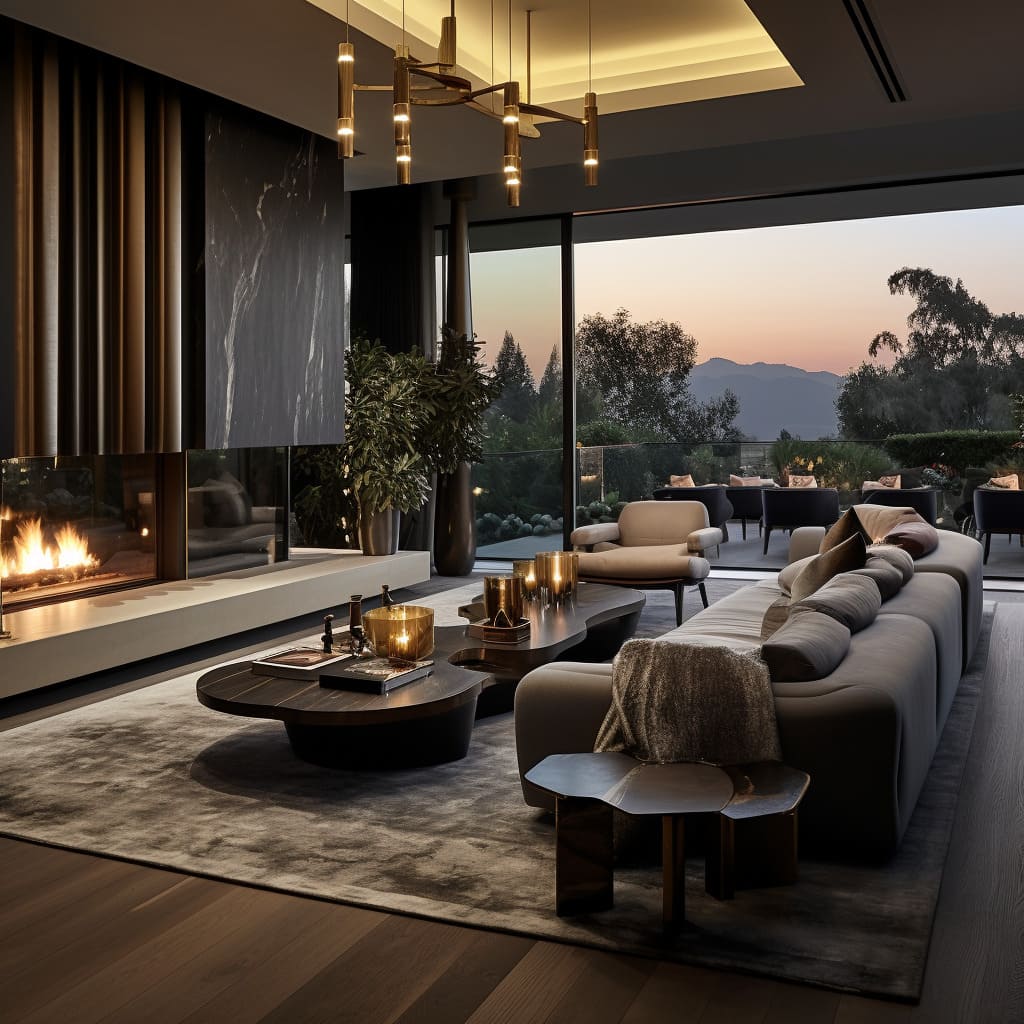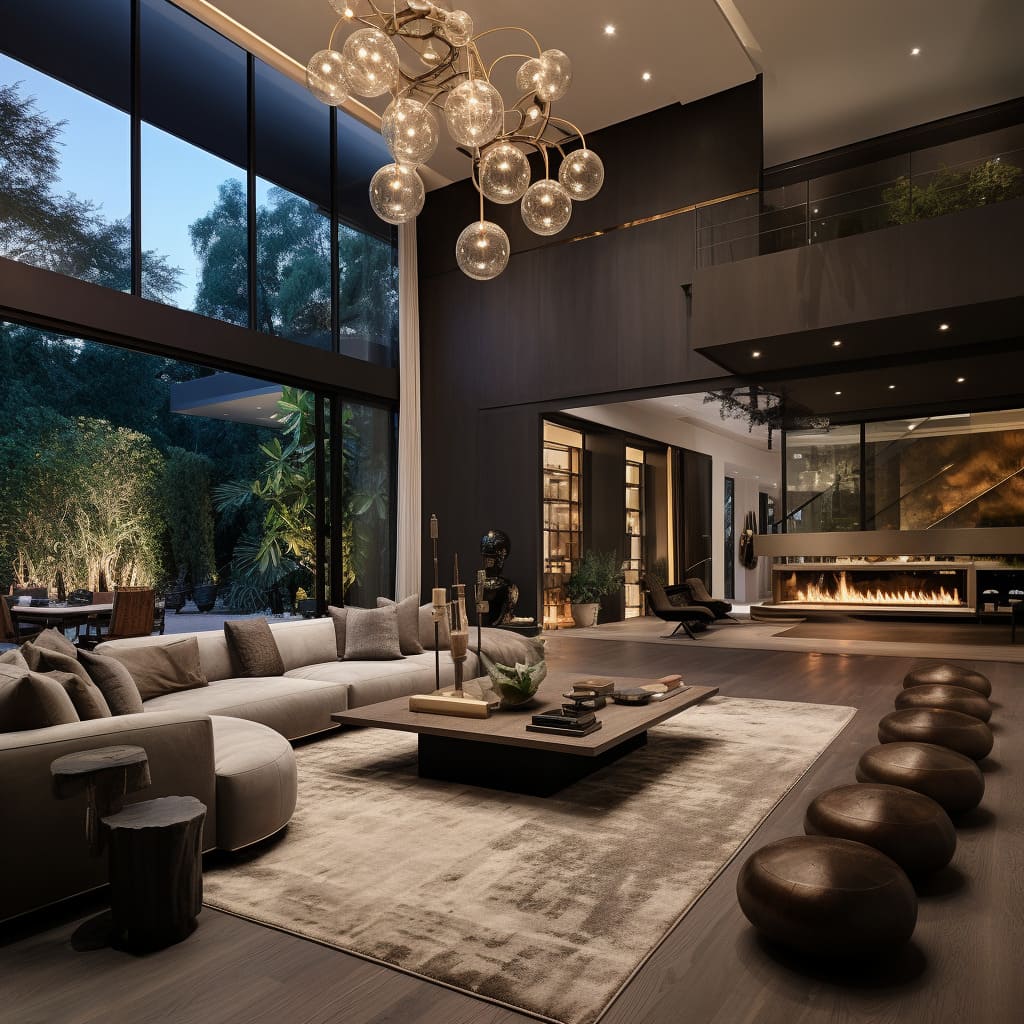In the dynamic world of interior design, the fusion of modern aesthetics with personalized elegance stands as a cornerstone of contemporary style. This article delves into the intricacies of creating spaces that are not only visually stunning but also embody a sense of individuality and comfort.
We explore various elements that play a pivotal role in shaping such environments, from the bold use of black cabinetry and the soft allure of plush area rugs to the inclusion of statement art pieces and the refreshing touch of indoor greenery.
Each aspect of design, whether it’s the color palette, the texture of materials, or the arrangement of furniture, contributes to the overall narrative of a space. The careful balance between luxury and functionality, the interplay of light and color, and the incorporation of both modern and organic elements illustrate the art of designing spaces that are both innovative and inviting.
This article offers insights into how these diverse components come together to create interiors that resonate with modern elegance, blending sleek, contemporary lines with the warmth and richness of personal expression.
In this journey through elegant interior design, we emphasize the significance of each design choice and its impact on the overall ambiance of a space. From the grandeur of architectural features to the subtlety of decorative accents, every element is a stitch in the tapestry of contemporary design.
Luxury and Modernity in Interior Design
The art of interior design often seeks a perfect balance between opulence and contemporary style. This approach is marked by a striking harmony of luxury and modernity, creating spaces that are both elegant and cutting-edge.
Central to this design philosophy is the use of a monochromatic color palette, primarily featuring blacks, whites, and various shades of grey, often accented with subtle hints of gold to bring a sense of richness.
A defining characteristic of these spaces is the blend of luxury elements, like elegant fireplaces with bold black marble backdrops, contrasting against bright and plush seating arrangements. This contrast not only adds depth but also enhances the luxurious feel of the space.
Lighting plays a crucial role, with contemporary chandeliers featuring glass orbs adding a chic touch, complementing the geometric shapes of the furniture and decor. Seating in these spaces is thoughtfully arranged, with curvaceous, white sofas and sleek black armchairs providing both comfort and style.
The presence of two-tiered coffee tables, adorned with decorative items, anchors the space, creating a focal point.
Flooring choices often include soft grey rugs with patterns that echo other elements in the room, like the marble of the fireplace, adding a cohesive touch. Natural elements, such as large, leafy indoor plants, are incorporated to bring life and freshness to the space.
Artwork, while present, is often understated, adding to the sophisticated atmosphere without overpowering it.
High ceilings and architectural lighting further accentuate the room’s luxurious appeal, highlighting the depth and clean lines of the furniture. In these designs, texture variation is key.
The smoothness of marble surfaces, the plushness of upholstered furniture, and the glossy finishes of cabinetry are all thoughtfully balanced with matte decorative objects.
This interplay adds depth and interest. Metallic touches in decor items, like bowls and vases, reflect light, enhancing the space’s luxurious feel.
Every aspect of such interior designs, from large-scale elements like fireplaces and lighting fixtures to the smaller details like decorative objects and throws, is meticulously chosen. This careful curation aims to create a cohesive, elegant, and contemporary space that exemplifies the essence of luxury living.
Integrating Art and Light
In the world of modern interior design, lighting fixtures have evolved into artistic statements, central to enhancing both the aesthetics and functionality of a space. A standout feature in such designs is an elaborate chandelier, often positioned as the centerpiece of the room.
This type of lighting is not just a source of illumination but also a significant art piece, contributing to the room’s luxurious and sophisticated feel. The warm hues of the metallic elements contrast effectively with the cooler marble tones and the grey color palette prevalent in the rest of the room.
The design of the chandelier is a testament to the seamless blend of form and function, a characteristic feature of modern interior design. It serves not only as a light source but also as a focal point, complementing the sleek design of the living space.
Strategically placed, usually above the main seating area, the chandelier anchors the space, drawing the eye upwards to high ceilings and creating a sense of verticality. This piece is essential in establishing a harmonious interaction with the room’s other elements, embodying the balance and elegance that modern interior design strives to achieve.
The Bold Impact of Black Cabinetry
In contemporary interior design, one striking feature often incorporated is a wall of black cabinetry and shelving. This built-in unit, extending from the floor to the ceiling, creates a dramatic and imposing effect in the space.
The matte black finish of the cabinetry stands out, absorbing light and offering a stark contrast to the lighter tones of the room, such as white walls and other decor elements.
At the upper section, the unit typically showcases open shelving. This space is artfully arranged with a selection of decorative items, which may include books, unique sculptures, and various art pieces.
Each item is thoughtfully placed to balance visual weight and color, contributing to an aesthetically pleasing and harmonious display.
The open design of the shelves allows each piece to be prominently displayed, enhancing the room’s overall decorative scheme. The lower part of the cabinetry is often designed for practical storage, concealed behind seamless doors with no visible handles or knobs.
This design choice contributes to the room’s modern, minimalist aesthetic, preserving the sleek lines and uncluttered appearance of the space. The storage functionality ensures practicality without sacrificing style.
The bold use of black for the cabinetry serves as an anchor in the room, effectively grounding the lighter hues and harmonizing with other black elements like armchairs or the base of a fireplace.
Area Rugs in Enhancing Interior
In the sphere of interior design, a significant element that often stands out is the area rug, particularly in living spaces. These rugs are typically large and plush, often featuring a marble-like pattern that echoes the dramatic veining of other statement pieces like a fireplace backdrop.
The design usually incorporates swirling shades of grey and white, seamlessly integrating with the overall color scheme of the room. The texture of these rugs is soft and luxurious, contributing to a sense of comfort and warmth underfoot.
They cover a substantial portion of the flooring, delineating the seating area and unifying the furniture arrangement. This not only aids in defining the space but also improves the room’s acoustics.
The organic pattern of the rug contrasts with the straight lines of the furniture, creating visual interest and a sense of balance. Strategically, the edges of the rug are often tucked under key pieces like the sofa and coffee table, fostering a sense of continuity and unity within the space.
The rug’s color and pattern are designed to complement, rather than compete with, the room’s other design elements. As a result, the rug becomes an integral component of the overall interior design.
The area rug plays a vital role in interior spaces. It balances the luxury of gold and marble accents with its own understated elegance.
Its presence is not just functional but also aesthetic, adding depth and texture to the room while harmonizing with the existing decor. The careful placement and selection of the rug underscore its importance in creating a cohesive and inviting living environment.
Incorporating Natural Elements
The inclusion of natural greenery is a key feature that injects organic life into the space. Among these elements, a prominent addition is often a large, potted indoor tree, strategically placed within the room.
This tree typically boasts a vibrant canopy of rounded leaves, which effortlessly spill outwards, offering a striking natural contrast to the otherwise monochrome and structured aesthetic of the space.
The tree is usually housed in a substantial pot, colored in a neutral tone to complement the room’s decor without overshadowing the plant’s natural beauty. Its strategic placement is crucial; it is often positioned near elements like a black marble fireplace or dark cabinetry, where it adds a burst of natural color and softens the rigid lines of these structures.
Introducing this green element plays a vital role in balancing the luxury of the interior with a sense of calm and tranquility. It embraces the concept of biophilic design, aiming to forge a stronger connection between the inhabitants and nature.
The presence of the tree is not merely for decoration; it also enhances the well-being of those in the space, contributing to a fresher atmosphere and potentially improving air quality. Additionally, the placement of the plant near a window often suggests an intention to create a visual link with the outdoor landscaping, further harmonizing the interior with the external environment.
Statement Artwork
A key feature that often brings depth and character to a space is a large, statement art piece. This type of artwork adds a distinct cultural and aesthetic dimension to the room, enriching its overall ambiance.
Typically, the art piece is set in a thick, gold frame, creating a striking contrast against darker elements like walls and cabinetry. The use of gold for the frame often complements other golden accents within the room, such as chandeliers and decorative touches on coffee tables, thereby maintaining a cohesive metallic theme throughout the space.
The artwork itself usually showcases an abstract design, characterized by bold, sweeping strokes of color. These colors often contrast sharply with the precise geometric shapes of the room’s furniture and the predominantly black-and-white color scheme of the interior.
The color palette within the painting is generally muted yet warm, incorporating earthy tones that harmonize with the gold of the frame and any greenery present in the room. A notable aspect of how these art pieces are displayed is their casual positioning, often leaning against a wall rather than being hung.
This approach lends a relaxed, modern vibe to the space, conveying a sense of laid-back luxury. It gives the impression of a space that is lived-in and personal, as opposed to a sterile showroom.
Such an art piece serves as a visual anchor in its area, drawing attention and adding a personal touch that makes the space more welcoming. It also acts as a counterbalance to other focal points in the room, like a large marble fireplace, thus contributing to a sense of balanced, harmonious symmetry in the room’s layout.
This deliberate placement and selection of artwork are pivotal in creating an inviting and aesthetically pleasing interior space.
In conclusion, the essence of this interior design lies in its masterful blend of modern luxury and personal expression. Each element, from the striking black cabinetry and the plush area rug to the statement art piece and elegant greenery, works in harmony to create a space that is both sophisticated and welcoming.
The careful balance of color and texture, the strategic placement of furniture, and the inclusion of both bold and subtle design choices contribute to a cohesive aesthetic that encapsulates contemporary elegance.
The use of a monochromatic color palette, accented with warm metallics and organic elements, showcases a keen attention to detail and a deep understanding of how color and form interact. The juxtaposition of luxurious materials like marble and gold with the softness of plush fabrics and natural greenery adds layers of depth and interest to the space.
Furthermore, the relaxed presentation of the artwork and the strategic use of lighting and greenery speak to a design philosophy that values comfort and personal connection as much as visual appeal. This approach results in a living space that is not just visually stunning but also functional and comfortable, inviting inhabitants to relax and enjoy their surroundings.
Overall, this article illustrates how thoughtful interior design can transform a space into a reflection of modern elegance and personal style. It is a testament to the power of design in creating environments that are not only aesthetically pleasing but also resonate on a personal and emotional level with those who inhabit them.

